K.M. Weiland's Blog, page 55
September 30, 2016
Learn How to Set Up the Potential for Change in Character Arcs

Note from K.M. Weiland: Welcome to a special follow-up post to my (temporarily) completed series The Do’s and Don’ts of Storytelling According to Marvel. Wordplayer and frequent blog commenter Usvaldo de Leon, Jr. (who will no doubt remind me “commenter” is not a word!) sent me the following thoughts on the use of excellent character arcs in Ant-Man. His comments were so good I had to share, and he was gracious enough to oblige. Please enjoy one last look at my favorite superhero film series before we take a break until Dr. Strange releases in November…
***
I used to be a psychic in the circus; indulge me: you have read a book or watched a film or TV show… perhaps even many? Maybe you have even watched a play (a “play” is a TV show with live actors, no commercial breaks, and you have to pay for your snacks)?
You may have noticed these all are stories, communicating themes both noble and base. The agent who communicates this theme is the protagonist, who changes throughout the story to elucidate the theme. This is referred to as a character arc: the character begins at Point A, flies through the air like Morpheus and lands at Point B, far away. When they land at Point B they are utterly changed and this change has two factors: it is both a result of the events of the story and emblematic of the theme of the story.
It is theme that separates; story is extremely common. It is dreary, even: Boy Meets Girl, Boy Loses Girl, Boy Wins Girl Back is the story for an entire genre. Similarly, Top Gun and Flight: same story (both feature inverted planes, in fact). Ben Hur and Gladiator: same story. Lord Foul’s Bane and Dreamlander: same story. Like siblings, they have a familial resemblance, but their themes ensure they are different. There is more than one path through the forest; a warren of routes from Points A to B.
How Theme Demonstrates Character Arcs
When we say the protagonist changes, what is actually changing? It is their inner state that is changing. They believe a Lie and over the course of the story they discover the Truth. This happens in three phases: Point A, the jumpoff point; the Midpoint, or flying through the air like Morpheus; and Point B, the ending state. (Note that when Neo, who is not prepared to change as a character, makes this jump he fails spectacularly. The metaphor is a metaphor.)
In Ben Hur, Ben Hur has a lightness of soul (jump-off point); after being sold into slavery, his only goal becomes revenge (flying); but through Jesus, he learns forgiveness and the power of grace (the landing spot).

Maximus, in Gladiator on the other hand, lives at the right hand of the Devil, his troops unleashing hell upon his command; after being sold into slavery, his only goal becomes revenge; he gets his revenge and with it the release of death.

Top Gun is the story of a U.S. Navy fighter pilot, prettier than he is smart, who does things his way until he gets it through his thick skull that he has to play nice with others.
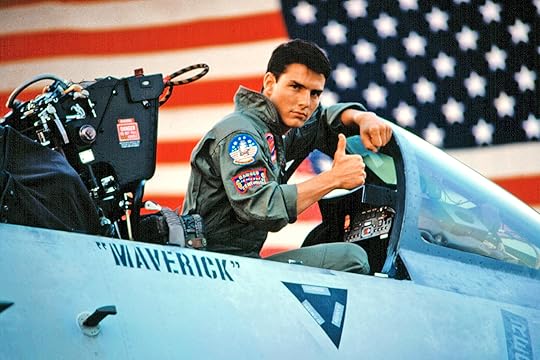
Flight is the story of a hotshot commercial jet pilot, prettier than he is smart, who does things his way until he finds himself in a situation he cannot fly out of.

The theme of Top Gun is: One must know their place, be selfless and give their all to help the team win.
In Flight, it is that a pilot—and a man—must care more for others than himself.
For the theme to work with the story, the protagonist needs to progress in line with the story beats.
At Point A, Maverick is so concerned with demonstrating his awesomitude he forgets to have his buddy’s back, which nearly kills the buddy. Maverick is so dense that he does not even understand why this is a problem. However, by Point B: Maverick is aware he has great ability but is willing—even eager—to sublimate that ability for the Top Gun, Iceman, if it accomplishes the team’s goal. (The goal in this case being starting World War III by shooting down Soviet jets, but hey, I never said Top Gun was thoughtful, only instructive.)
In Flight, Point A finds Whip Whitaker hopelessly addicted, deeply irresponsible, and leading a selfish life. Point B finds him at peace, despite jail, and serving others. He has lost everything except the things he needed: his self-respect and the love of family and friends.
Which brings us to the Marvel film Ant-Man. Protagonist Scott Lang also begins in jail and comes close to winding up right back there for most of the film. How he avoids that fate is the arc he undergoes. How does this happen?
Begin Your Story 180 Degrees Away From the Theme
The only way to prove the importance of your theme is to put your main character in diametric opposition to the theme at the start. Point B is the character aligned with the theme. Push point A as far from the theme as possible. The plot is designed to get the protagonist from Point A to Point B.
The theme of Ant-Man is: A hero is a person who makes a tremendous sacrifice for the greater good, usually at great cost to himself.
As the film begins, Point A for Scott is, “I can’t do anything that will jeopardize my access to my daughter.” His mindset is selfish. It has nothing to do with what his daughter wants—only what Scott wants. In fact, Scott’s ex-wife tells him what his daughter wants: “Be the hero she already imagines you to be.” If Scott had just done that from the beginning, it would have saved us all a lot of trouble.

In Top Gun, Maverick leaves Cougar’s wing to attempt the impossible and invert his jet. Maverick then goes to retrieve Cougar, who is rattled by the hostile encounter and nearly crashes. With bravery equal to his foolhardiness, Maverick saves the day after initially ruining it. Point A is selfish and reckless.
Whip Whitaker saves the day in Flight, inverting his commercial jet (another impossible move) to crash land in a field and save almost everyone. No one but Whip could have done that. However, Whip is totally lost: doing cocaine the night before a flight and drinking while flying. Point A finds Whip so lost in pride and pain he can’t see how his selfish actions hurt others.
Provide Signposts Along Your Character’s Journey
When you are traveling the interstate, it is easy to wonder: are we there yet? Then a flash on the roadside says: [Place you want to go] 106 miles.
Stories use the same signposts to show how far the main character has traveled. Very often, there are two character types the protagonist can be measured against (h/t Chris Soth): the character who represents the past and no change and the character who represents the future and positive change.
In Ant-Man, the characters who represent the past are Scott’s criminal buddies. Eventually, however, even they change, reflecting the theme, as does every major character in the film (save one), but in the beginning they want to hold Scott back.
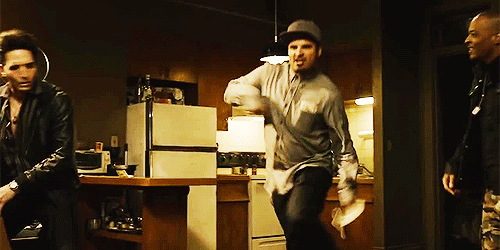
The character who represents the positive change future is Antony, Scott’s carpenter ant steed. Like all the ants, Antony stands ready to sacrifice for the greater good. Throughout the film, the ants work together selflessly to accomplish the team goals.
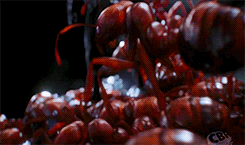
(It is one of the great weaknesses of the film that, when Antony is killed, the moment means nothing because the ants are all CGI and have zero personality. I refer you to the first and still best film in this series, Iron Man, which anthropomorphized not one but two robots, for an example of how it can be done).
Top Gun’s character who represents not-changing is Goose, Maverick’s RIO. Goose enables Maverick in his reckless antics, which ultimately costs him his life. The character who represents positive change—what Maverick could be—is Iceman. Maverick has no truer friend (at least to his flying career) than Iceman, who gives him a steady drumbeat of the actions he should be taking. Because Iceman is written and played repellently, he is usually seen as the antagonist, but the antagonist—the person who is most determined to stop Maverick from reaching his goals—is Maverick himself.
In Flight, the character who represents the past for Whip is his drug dealer Harling, who has a vested interest in keeping Whip out of his mind on drugs. The character who represents the future is the recovering drug addict Nicole, who breaks off their fledgling romance rather than let Whip pull them both down.
Include a Huge Decision at Your Story’s Midpoint
One can never know for sure where a protagonist is headed until the Midpoint. Negative themes are just as valid as positive ones, and it is here the determination is made.
In Ant-Man, the Midpoint comes when Scott is unwittingly sent to infiltrate an Avengers facility. Scott is ordered to abort—but if he had, he would have remained selfish. However, he is confident in his ability to accomplish the mission. The Midpoint is where Scott begins to become selfless (if we don’t have this device, we can’t stop Cross).

After his cancer diagnosis, what does Walter White do in Breaking Bad? He decides to sell drugs. Way to take your arc negative at the Midpoint, Walt!
In Flight, at the Midpoint when Nicole leaves Whip, Whip could have decided there was no longer any point in changing. The negative arc would have ended “happily” with Whip cleared by the National Transportation Safety Board, but at the cost of all his family and friends.
What About the Bad Guy?
In the summer of 1492, it was unbearably hot in Spain and Christopher Columbus could not even. He convinced the queen to give him three ships, and he set sail to party with Rihanna in Barbados. He started in Point A: Spain. He ended in Point B: Hispaniola. What was it that brought him there, across the ocean? It was the wind, an unseen force driving Columbus to make small adjustments every day to stay on course.
For protagonists, the antagonist is like the wind for ships in the age of sail. It is the driving force, constantly pushing characters to arrive at their destination. Unfortunately, none of our previous examples are any good here. Top Gun and Flight both feature internal antagonists; Ant-Man has an antagonist that is kind of foisted onto Scott; it’s one of the major weaknesses of the film. So we will press into service one of the great antagonists of all time: Vader. Darth Vader.

Let us look at Star Wars with fresh eyes. Darth Vader is forced home to Tatooine, where he sees his son Luke has grown up into a hot, whiny mess. Clearly, Darth’s brother and his wife were not up to the job of raising Luke, so Darth has them summarily whacked. This forces Luke’s hand. Instead of staying home like a whiny ne’er-do-well, he must go on an adventure with Obi-Wan.
When Luke arrives at the Death Star, he is pretty much just as whiny as ever. Darth forces him to use his resourcefulness to avoid being crushed (although if the whiny boy is crushed, that would also work; Darth is a tough dad). But the boy does not seem to be getting it. Darth therefore has no choice but to kill the boy’s mentor before the boy’s horrified eyes.
And what do you know? Luke volunteers to attack the Death Star; but he keeps futzing around, so Darth has to get himself winged by Han Solo so the kid will finally take the shot—and who gets the credit for helping this boy grow by learning some tough lessons? Darth? No: Obi-Wan. Nobody ever thanks Daddy. The things fathers do for their children…

It is through the well-timed obstacles the antagonist places in the path of the protagonist that the protagonist, through both reacting and acting, grows and reaches Point B. The reason this is possible is that these two characters are yoked together. They diametrically oppose each other. Luke stands for goodness, light, and artisan lollipops, while Darth stands for evil, darkness, and lollipops mass-produced by starving children. Anything Darth does will negatively affect Luke and vice versa.
In Ant-Man, Darren Cross was Hank Pym’s antagonist and Cross’s actions do not directly affect Scott until the climax.

Carefully Plan Your Climactic Encounter
We’re midway through the Third Act. The main character knows what they need to do. However, it is not understanding but action that defines character. And so the main character will be faced with a crisis where they will be forced to choose: the past or the future? Point A or Point B?
In Ant-Man, that moment comes when Yellow Jacket has Scott’s daughter and is too powerful for Scott to defeat. The only way to stop Yellow Jacket is to go sub-atomic, which is a suicide mission. The crisis: Does Scott continue to be selfish or does he sacrifice himself to save his daughter? Only pausing long enough for the audience to understand the stakes, Scott shrinks himself—fully aligning himself with the film’s theme. He chooses to be the hero his daughter always imagined him to be.

In Top Gun, Maverick is faced with a double crisis: Does he let his fear get in the way of rescuing his teammates? And will Maverick fly as the wingman or will he does he own thing? Maverick conquers his fear and sublimates his ego to accomplish the mission. He chooses to be a teammate.
In Flight, Whip is before the NTSB when he is asked about two missing vodka bottles. The crisis: Does Whip continue lying and smear his sometime girlfriend Trina, who died in the crash? Or does he stand up, take responsibility for his actions, which will send him to prison? Whip decides it is time to tell the truth, landing him in prison. He chooses to accept responsibility.
The crisis moment is the theme question. Is the main character going to align to the theme? Are they going to choose to become what the theme dictates they become? (Spoiler Alert: Yes)
Prove Your Character’s Change in the Resolution
Have you ever noticed people smile all the time in films? The positive arc is by far the most popular arc, which means the ending is usually a new beginning: Maverick and Iceman smiling and… hugging? (I might be misremembering that.) Whip and his son bonding on a prison visit. And perhaps most improbably, Scott having dinner with his ex-wife and her fiancé, with good feelings all around, interrupted by a possible call for Scott to join the Avengers.

There needs to be a moment at the end of a story where everyone catches their breath and reflects on how far the protagonist has come (in a positive or negative arc; a flat arc character does not change). This coda reinforces the change and sends the audience off in the right emotional state.
The character arc concept is a key element in developing a satisfying story. The character arc is one of the primary reasons mankind has stories. Aristotle laid down the rules millennia ago; even today, reading Poetics is pretty much all you need. Why are you still reading this?
Stay tuned: In November, we’ll be learning some more marvelous things from Dr. Strange.
Previous Posts in This Series:
Iron Man: Grab Readers With a Multi-Faceted Characteristic Moment
The Incredible Hulk: How (Not) to Write Satisfying Action Scenes
Iron Man II: Use Minor Characters to Flesh Out Your Protagonist
Thor: How to Transform Your Story With a Moment of Truth
Captain America: The First Avenger: How to Write Subtext in Dialogue
The Avengers: 4 Places to Find Your Best Story Conflict
Iron Man III: Don’t Make This Mistake With Your Story Structure
Thor: The Dark World: How to Get the Most Out of Your Sequel Scenes
Captain America: The Winter Soldier: Is This the Single Best Way to Write Powerful Themes?
Guardians of the Galaxy: The #1 Key to Relatable Characters: Backstory
The Avengers: Age of Ultron: The Right Way and the Wrong Way to Foreshadow a Story
Ant-Man: How to Choose the Right Antagonist for Your Story
Captain America: Civil War: How to Be a Gutsy Writer: Stay True to Your Characters
Wordplayers, tell me your opinion! In your character arcs, what are your characters’ starting and ending mindsets? Tell me in the comments!
The post Learn How to Set Up the Potential for Change in Character Arcs appeared first on Helping Writers Become Authors.
September 26, 2016
7 Questions You Have About Scenes vs. Chapters
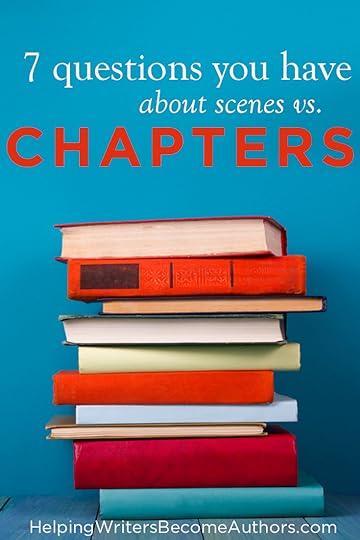 A chapter is a chapter and a scene is a scene. Or are they? What’s the differences between scenes vs. chapters? Are they ever the same thing? Must a chapter always be a complete scene? Or must a scene always be a chapter? What about scene breaks and chapter breaks? Is there a difference?
A chapter is a chapter and a scene is a scene. Or are they? What’s the differences between scenes vs. chapters? Are they ever the same thing? Must a chapter always be a complete scene? Or must a scene always be a chapter? What about scene breaks and chapter breaks? Is there a difference?
These are all questions I receive regularly from writers, and they’re all good questions with surprisingly simple answers.
The shortest and simplest answer to all of these questions is: yes, scenes and chapters are different, with very different structural roles to play within your story.
Let’s take a look at five important questions about scenes vs. chapters, which will help you better understand and control your narrative.
1. Why Do Authors Have Trouble Differentiating Scenes vs. Chapters?
First of all, let’s consider why scenes vs. chapters is even a big question at all.
Mostly, it’s because chapters are obvious and scenes aren’t. As writers, we all start out as readers, and to readers, the concept of chapters is very obvious, very visual. On its surface, a book seems to be divided into chapters, right? Scenes, then, are just smaller structural integers within the chapters.
But then, when you start learning about scene structure, you realize there’s actually a whole lot more to scenes than you thought—and a whole lot less to chapters. Nobody ever talks about “chapter structure” after all.
Turns out it’s the comparatively invisible scene that is the far more important structural unit within a story than is the obvious chapter. At first glance, that seems counter-intuitive, and that’s what trips writers up in understanding the unequal importance of scenes vs. chapters.
2. What’s the Difference Between Scenes vs. Chapters?
So what is the difference between scenes vs. chapters?
Scenes are very specific structural building blocks within your story. Each scene is made up of six distinct parts (see below), all of which are necessary in order for each scene to build into the following one to create a seamless narrative. Scene divisions are non-negotiable.
Chapters, on the other hand, are completely arbitrary divisions within a book. It’s true they do impose order upon a novel—and, as a result, a certain sense of structure. But, on the story level, they actually have nothing whatsoever to do with structure.
Chapter divisions are more about pacing than anything else. You might write a book with no chapter divisions (such as Marilynne Robinson’s Gilead) or a humongous fantasy novel with only nine chapters (such as Sergei and Marina Dyachenko’s The Scar) or one with chapters of only a single sentence (such as the notorious “Rinse” in Stephen King’s authorial nightmare Misery).

Chapters can be any length—from the entirety of the book to a single word.
In short, scenes are logical decisions; chapters are creative decisions.
3.What Must a Good Scene Accomplish?
For the moment, let us consider scenes and chapters separately to understand what each is responsible for accomplishing within your story.

Because scenes are ultimately much more complicated and much more important than chapters, they can be the more difficult of the two for writers to initially get their heads around. I’ve written extensively about scene structure in this series and in my book Structuring Your Novel, but here’s a crash course in good scene structure.
First off, remember scene structure has absolutely nothing whatsoever to do with chapter divisions. (More on that in a bit.) The scene is always a complete unit unto itself, regardless how long or short it turns out to be. What’s important in designing or identifying a scene is making sure the following six parts are all present.
We start by dividing each scene into two parts: scene (action) and sequel (reaction). We then further divide each of those halves into three more pieces each:
Scene
1. Goal (the protagonist or POV character sets out to accomplish or gain something).
2. Conflict (en route to his goal, his efforts are blocked by an obstacle of some type).
3. Disaster (the character’s attempt to gain his goal is at least partially stymied, forcing him to move forward on the diagonal, instead of rushing straight ahead through the plot).
Sequel
4. Reaction (the character must then react, however briefly or lengthily, to the previous disaster—this is where the vast majority of character development will take place).
5. Dilemma (as the result of the disaster, the character is confronted with a new complication or dilemma in his attempt to reach his main story goal).
6. Decision (the character comes to a decision about how best to act, prompting a new goal in the next scene).
And then the cycle endlessly repeats throughout the story.
Each scene is a domino. When set up correctly, scenes create a seamless line of cause and effect that almost effortlessly powers your entire plot.
4. What Must a Good Chapter Accomplish?
Good book chapters have two primary roles:
1. Chapters Control Pacing
Chapters create a sense of rhythm within the story. Depending on the length of each chapter, this rhythm will either speed or slow the pacing.
Shorter chapters create faster pacing—which is why thriller authors such as James Patterson often opt for hundreds of chapters, some of which are no longer than a page.
Longer chapters, in turn, slow the pacing. Patrick O’Brian’s Aubrey/Maturin series recreates the leisurely, often charmingly indulgent style of early 19th-century literature. One of O’Brian’s more obvious techniques in achieving this pacing is his employment of very long chapters, some of which require an hour or more to read.
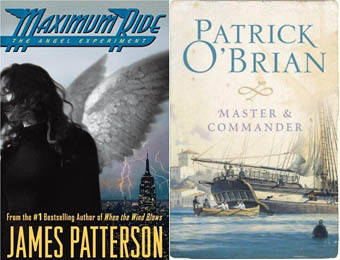
Shorter chapters are often used in thrillers to achieve faster pacing, while more leisurely books implement longer chapters to slow the pacing.
It’s true scene length also plays a role in pacing, but not to nearly the same extent as chapter length. Because chapters are much more obvious to readers (rather like commercial breaks in a TV show), they exercise much more blatant control over the reading experience.
2. Chapters Keep Readers Reading
The second role of the chapter is to create an experience that convinces readers to keep reading. Even to dedicated readers, books are undeniably a large time commitment. There’s never any guarantee readers will actually make it through your entire book—which means it falls to you to convince them to keep reading.
Chapters are the key to influencing readers into the proper mindset to continue turning pages. The control chapters exercise over pacing plays a role in this. Even more importantly, however, is the opportunity each chapter ending and beginning offers to hook readers back into the story.
Just as you have to hook readers with the beginning of the book, you have to re-hook them throughout the book. You’ll do this through reveals, scene disasters, and plot twists. But you’ll also do it twice within every chapter—at the beginning and at the end. Done skillfully enough, you might even convince readers to read straight through without ever putting the book down.
5. Does Every Scene Have to Be a Chapter?
Now that you understand the important differences between scenes vs. chapters, how do you fit the two of them together within the overall scheme of the narrative? Stephen King and James Patterson aside, is it ideal to divide the story into chapters based upon each scene’s structure? Should each complete scene be a chapter unto itself?
There is no “right” answer to this. Can a scene be a full chapter? Definitely. Does it have to be? Not at all.
Once again, the defining attributes of a scene have nothing to do with how many chapter breaks break it up. Depending on the needs of your story, the length of your scene, and your goals for the pacing, you may write a scene/sequel that spans multiple chapters.
6. Does Every Chapter Have to Be a Scene?
By the same token, not every chapter has to contain a whole scene. A chapter might contain nothing more than a single thought, as does William Faulkner’s one-sentence chapter in As I Lay Dying.

Or it might contain only a single part of a scene’s overall structure, such as, say, the character’s reaction to a previous disaster.
That said, my personal favorite approach to dividing scenes into chapters is to actually use the chapter break to divide the scene in half. I like to end chapters with the Scene Disaster, since it usually provides an excellent what’s-gonna-happen hook to keep readers reading.
This then allows me to open the following chapter with the Sequel Reaction, in which the characters respond to whatever just happened. I finish out that scene’s structure, then begin the next scene halfway through the chapter and end with another Scene Disaster.
The pattern I create looks like this:
Chapter
Sequel Reaction
Sequel Dilemma
Sequel Decision
[scene break]
Scene Goal
Scene Conflict
Scene Disaster
[chapter break]
This isn’t, of course, a hard-and-fast pattern. I’ll abandon it wherever necessary (such as when any part of the scene structure grows too long to be contained within the chapter length I’ve chosen for my story’s pacing). But it’s a good guideline for creating chapters that harmonize well with your scene structure and are primed to perform their most important job of hooking and re-hooking readers.
7. Are There Different Rules for Scene Breaks vs. Chapter Breaks?
Finally, let’s consider the difference between scene breaks and chapter breaks.
A chapter break indicates the end of one chapter and the beginning of the next.
A scene breaks indicates a shift of some sort within the middle of a chapter.
There are two types of scene breaks: hard and soft.
What Are Hard Scene Breaks?
Hard breaks are used to indicate a distinct shift within the story. This might include:
The beginning of a new structural scene unit.
The characters’ moving to a new setting.
A large jump forward in time.
A new POV narrator.
Hard breaks are usually indicated by a centered triplicate of asterisks or a short line in the middle of the page, between the paragraphs that needing splitting.
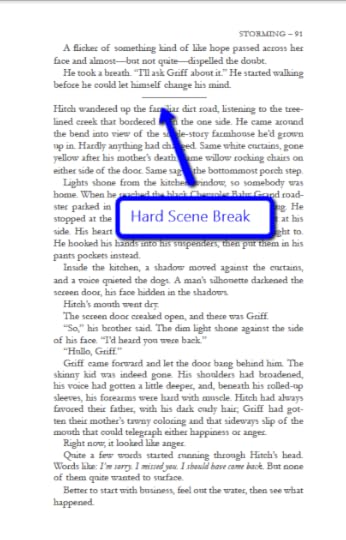
In my historical dieselpunk novel Storming, I used a hard scene break here to indicate a change in time and setting as the protagonist Hitch goes to visit his estranged brother.
What are Soft Scene Breaks?
Soft breaks are often as much as pacing trick as anything else. They serve to indicate a much smaller or less distinct shift within the story. This might include:
A minor or inconsequential shift in setting while the main action of the scene continues (e.g., the characters move from an office to the street, where they resume the same conversation).
A minor or inconsequential shift in time (e.g., “After they finished eating…”)
Soft breaks are usually indicated by only an extra space between the paragraphs that need splitting.
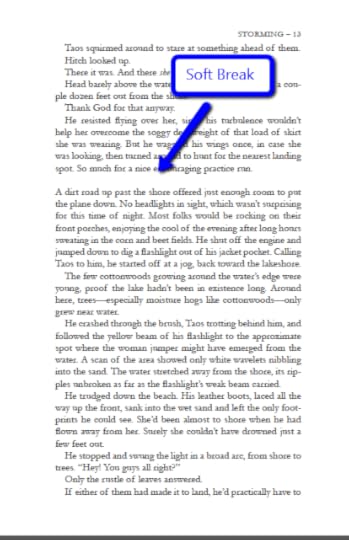
I used a soft scene break to skip a small amount of time as my barnstorming pilot protagonist figures out where to land his biplane after his engine dies.
What Are the Rules for Good Scene and Chapter Breaks?
As you can see, scene breaks occur at very specific moments within the story, while chapter breaks can occur just about anywhere you want them to. But the rules for executing both are the same.
Whenever you create a break of any type within your story, you must be aware of the potential for losing your readers’ focus. You combat this by creating solid hooks at each scene or chapter break.
The best way to think of a hook is simply as something that piques readers’ curiosity. Phrase the end of each chapter or scene in a way that creates even the smallest bit of dichotomy. Get readers to wrinkle their brows a little and ask themselves, What does that mean…? And, bang, you’ve got ’em! They’ll keep right on reading, regardless what kind of break they’re looking at.
***
My bet is you’re already instinctively using your chapters and scenes correctly. Don’t let the technical differences confuse you. Master them and claim them, so you can use and harmonize your scenes and chapters to create a seamless and hypnotizing reading experience.
Wordplayers, tell me your opinion! What is your biggest challenge regarding scenes vs. chapters? Tell me in the comments!
http://www.podtrac.com/pts/redirect.mp3/kmweiland.com/podcast/7-questions-you-have-about-scenes-vs-chapters.mp3
Click the “Play” button to Listen to Audio Version (or subscribe to the Helping Writers Become Authors podcast in iTunes).
The post 7 Questions You Have About Scenes vs. Chapters appeared first on Helping Writers Become Authors.
September 23, 2016
How to Be a Gutsy Writer: Stay True to Your Characters
 Part 13 of The Do’s and Don’ts of Storytelling According to Marvel
Part 13 of The Do’s and Don’ts of Storytelling According to Marvel
Sometimes the greatest act of courage any person can perform is simply that of being honest. This is arguably more valid for writers than for just about anyone—and it is nowhere more valid than in being willing to stay true to your characters.
Here’s the thing about characters. They’re humans, right? Which means (spoiler!) they’re a composite of traits: neither good nor bad, right nor wrong, likable or unlikable. They’re a little bit of everything.
As writers, this realization can sometimes put us on shaky ground. We want to write characters who are both real and likable. But in allowing our characters to be real, sometimes this means letting them make choices and performs deeds that really aren’t all that likable.
That can be scary. What if, in being honest about your characters, you end up creating someone readers won’t like? Or, worse, what if the character ends up reflecting upon you in a way readers might not like so much?
Well, here’s the good news: as real as these fears may be, they’re largely unfounded. Readers like “true” characters far more than they do likable characters—and Marvel’s Captain America: Civil War shows us why.
Why Captain America: Civil War Is the Marvel Movie We’ve All Been Waiting For
Marvel has bent expectations right from the start with their interwoven cinematic universe of heroes who bounce in and out of each other’s movies. In the third, and probably final, Captain America movie, Marvel pushed this concept to the max (yes, even maxier than with Avengers). Civil War brings together almost the entire team so far (with the notable exception of Thor and Bruce Banner) into a storyline that does what the series as a whole arguably does best: interpersonal conflict.
From the moment the Civil War storyline was announced, I was stoked. It’s such a ripe opportunity for exploring characters, convictions, and painful relationships—all of which the Marvel series has in spades. Although it’s certainly not a perfect movie, the Russo brothers directorial team once again proved themselves capable of streamlining a vast amount of characters and subplots into a story that was ultimately always going to be about the face-off between Steve Rogers and Tony Stark.

I’m a Team Cap girl all the way, but I came out the theater (three times) finding myself chewing over the presentation of Tony more than any other character. When I then went back to re-watch Iron Man (which kickstarted the whole idea for this blog series), the overarching story came full circle in a way that made me feel Civil War is a culmination of the entire journey so far, the movie we’ve been waiting for ever since Marvel blasted onto the scene to the riffs of Black Sabbath.
Almost entirely, this is due to the fact Marvel was willing to be achingly honest about its beloved but incredibly flawed characters.
There really isn’t much I don’t like about this movie, save that it inevitably wobbles under its huge burden of plot and subplots toward the end and feels a little anticlimactic in a few places. It isn’t perfect, but what works for me works so well I really don’t care.
It’s hard for me to come up with a good highlight reel this week, just because, you know… everything. But here are few shout outs:
Best. Motorcycle. Stunt. Ever.

Beautifully pertinent and burningly intense subplot via the Black Panther.

Spidey. Spidey. And Spidey. (As soon as “QUEENS” blared onto the screen, I hurt my face grinning.)

And at last: sensible shoes for Black Widow.
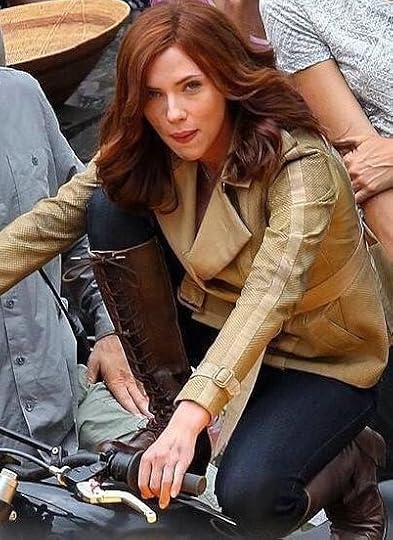
4 Ways to Stay True to Your Characters
In trying to walk that sometimes delicate line between likable and realistic heroes, you might find yourself writing your way around honesty without even realizing it. Sometimes it’s hard being hard on our characters—because it also means being hard on ourselves.
We often want our characters to conquer, to be happy, to be worthy. They’re vicarious extensions of ourselves after all. But the irony is that when we whitewash our characters, we inevitably end up with weaker stories.
Here are four questions to ask yourself in order to double check that you’re staying true to your characters, your story, and, ultimately, yourself.
1. Who Are Your Characters?
Sometimes you will deliberately set out to write a certain kind of character. Other times, you’ll discover the character while you write him. Either way, it can be easy to lose the forest for the trees and miss out the “big picture” character you’re creating.
Sure, he’s funny, does the right thing, and generally fills out his hero shoes. But is that all he is? Western author and Wordplayer Brad Dennison describes the protagonist of his McCabe series as:
Johnny McCabe, the main character, is a gunfighter who has a moderate case PTSD from being shot at too many times. He doesn’t oil the door hinges in his house, because he wants them to squeak when they open. At night, if he hears a door hinge squeak, he knows the door is being opened. If he hears that, or even the house creaking, he’s instantly awake. He keeps a gun within reach at all times.
This isn’t heroism; it isn’t intended as heroism. It’s a traumatized man dealing with a hard past. And Brad is honest enough about his character to look past the surface trappings of the genre to recognize that and write it forthrightly.
How to Discover the Character You’re Really Writing
Step back and really examine your character. You may already know everything there is to know about him. But it’s also possible you’ll realize a few things you haven’t noticed before.
Look at his obvious flaws. What is their root cause?
Look at his obvious virtues. What is really motivating him? Ideally, your character should never be engaging with your main conflict (or, for my money, any conflict) for purely selfless reasons. So what’s his selfish reason for the good stuff he does? Now, you’re discovering who this character really is.
Once you’ve exhausted your own awareness of your story, call in backup. Ask some of your readers: What is their take on your character? Chances are excellent you’ll learn some things about your own character you never considered before.
How Civil War Was Honest About Who Its Characters Really Are
Any conflict of moral values gives you a tremendous opportunity to drill deep into the heart of the characters. The stakes go up even more when these characters are both “good guys” and the author bears zero responsibility for villainizing either one of them.
In Cap and Tony, we have arguably the two most popular characters in the entire series. Most viewers love both characters and, deep down, want to cheer for both characters. But both characters can’t both be right. They can’t both win.
Cap is a stubborn anti-authoritarian (which is an awesome bit of irony coming from an ultra-conservative, ultra-traditional character), who has a dubious personal agenda in rescuing his long-ago best friend Bucky Barnes, aka the Winter Soldier.
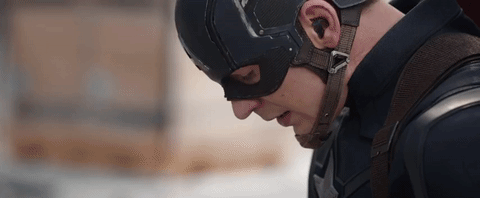
Tony is and has always been the most flawed character in the entire series, and the filmmakers never once shy away from this. Tony’s the “bad guy” here. Tony makes wrong decision after wrong decision for deeply personal reasons that feel like an almost inevitable outcome of his past hang-ups and mistakes. Not exactly heroic for a guy who has always been one of our heroes.
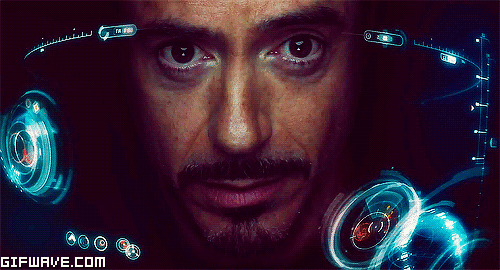
But how much better is the movie and the character development for being willing to shine a light on its characters’ dirty secrets?
2. How Have Your Characters Changed By the End of the Story?
Want to utilize one of the best ways for discovering who your character really is? Look at how she has changed—or not changed—by the end of the story. Even if your character starts out as a less-than-great person, she might prove who she really is by ending as an objectively good person who chose to do the hard right thing. Or, vice versa, she might have chosen to reject the right thing in order to cling to her own selfish or broken preferences.
The story never lies. Even when you might not entirely realize what kind of character you’re writing, the story will tell you. You can put all the pretty glitter you want on a character, but if her change proves to be negative in the story’s end, that‘s who she really is. And vice versa (which is one reason we love anti-heroes so much).
How to Figure Out How Your Character Has Changed
Ask yourself:
What negative personality traits has she overcome?
What positive personality traits has she embraced?
What positive personality traits has she rejected?
What negative personality traits has she embraced?
How has she changed physically (new clothes, straighter posture, etc.)?
What has she sacrificed along the way to gain her goals (either selflessly or selfishly)?
The character these answers reveal is the true character. This is the character you’ve been writing all book long, even if she spends most of the book acting in opposition to her ending status.
How Civil War Was Honest About How Its Characters Changed
This is Cap’s movie. There was never any doubt he was going to be the “good guy” and “win” the conflict, while Tony would be the “bad guy” and “lose.” This premise worked largely because of how it had been set up by the previous films.
Had the storyline turned Cap into someone seeking emotional revenge, the story would have been neither honest nor compelling. That’s not true to the character. Putting his friendship with a solitary wrong person above everybody else’s moral and logical arguments, that is true to his character.

The heartrending final fight in this film works largely because Tony’s actions are also utterly true to the man presented throughout his five previous films: emotionally distraught, ridden with daddy issues and regret, full of self-loathing, and obsessed with self-redemption.
The beauty of it is that Tony’s “flaws” are so utterly relatable and compelling, audiences are not distanced from him even as he makes wrong choices and tries to kill other characters we love.
[image error]
3. What Are the Logical Consequences of Your Characters’ Choices?
Often, writers will set up situations for their characters to work through just because these situations are interesting or fun for the moment. But honest writing demands we always create consequences for these situations.
If your teenage character goes for a joyride in a cop car just because you like the scene that results, that’s not good enough. The cops better show up at his parents’ door the next morning, wondering why their vehicle is double-parked outside the driveway.
The single most honest thing any writer can do is force his character to face legitimate consequences for his actions.
How to Write Logical Consequences for Your Characters
Take a good hard look at the choices your character makes. The more important those choices, the more scrutiny they deserve.
Ask yourself, in a realistic world, what negative consequences would logically result from these choices?
Then take it one step further. How can you make these consequences even more dire? The bigger the scene (e.g., is it a plot point?), the heavier the consequences should be.
Now, punish your character with these consequences. Take it as far as you can without delving into melodrama. It’ll hurt, but your story will improve in every way imaginable.
How Civil War Was Honest About the Consequences of Its Characters’ Choices
Including Tony in Civil War was a brilliant idea on so many levels, not least because it closes his arc in such a sad but honest way. As a hero within his own movies, he seemed fated by genre convention to end heroically. But because Civil War lifted him out of the context of his “own” story, it allowed for a much more honest appraisal.

As you may remember, my take on the “cornerstone” themes in the individual Marvel trilogies is that the Captain America movies are about friendships and loyalty, the Thor movies are about family, and the Iron Man movies are about self: selfishness, self-destruction, self-improvement, and the search for personal redemption.
Tony is a desperately flawed person, who has been seeking redemption in all the wrong ways. He has spent the entirety of the series trying to escape his own self-loathing and atone for his mistakes. Everything he’s done is a flamboyant gesture in an attempt to assuage his own guilt—from becoming Iron Man in the first place as a way to atone for his war profiteering, to creating Ultron in an attempt to protect the world from the threats he feels partially responsible for launching, to pushing the Accords in atonement for the deaths in Sokovia.
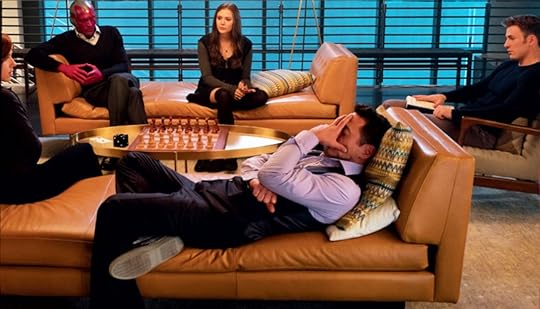
But no matter how hard he tries, he just can’t escape himself. That all comes home in a desperately raw and honest way in Civil War when his character finally spirals out of any semblance of heroism, forcing both Tony and the audience to face the truth about him.
4. Which of Your Character’s Actions or Attitudes Scare You?
How do you know which of your story ideas is truly honest?
Easy. It’s whichever scares you into wanting to give up writing altogether.
As my critique partner Linda Yezak wrote recently in a series of posts:
What are we afraid to write because it’s too intense and personal? Write that. Write it because it’s most relatable, because it’ll help you overcome the baggage, because your readers will realize they’re not alone. Because, if you don’t write about it… your story is shallow.
Sometimes our characters end up going to some pretty dark places—and we don’t like it. We try to steer them back to the light, back to that fun, light, happy little scene we really want to write. But that’s not honest. It’s not going to do either your character or your story justice. And readers are instinctively going to understand you’re avoiding the story’s juiciest possibilities.
How to Write Characters That Scare You
Ultimately, whatever scares you about your character is something that scares you about you. Writing is sometimes self-introspective torture. (Gotta suffer for your art, remember?)
Ask yourself:
What scares you most?
What makes you uncomfortable?
What don’t you want others to know about you?
How are these things reflected in your characters?
How are you avoiding writing these aspects of your characters?
What scenes can you create to allow you to fully explore these aspects?
How Civil War Presented Scary Characters
As far as jerks go, Tony is a deeply likable character. He’s funny, smart, unexpected, loyal, and ultimately, in his own individualistic way, upright. But if he was just a good guy with a smart mouth who pretended to be a jerk, that wouldn’t be an honest character.
In truth, a likable jerk can be one of the hardest of all characters to write. We write them because we love their their baditude, but that doesn’t mean we always like the grimy parts that create that persona.
For example, we may find Tony endlessly entertaining, but the fact remains he’s often immoral, out-of-control, and dangerous. How easy would it have been for squeamish writers or filmmakers to gloss over these less appealing aspects of his personality?
And yet if they had, we would never have gotten the intense and often cathartic honesty of Civil War, in which all Tony’s bad seeds finally bear catastrophic fruit, which he and everyone he cares about must deal with. It’s not the end we want for one of our heroes. But it’s the end we need because it’s the only end that’s true.
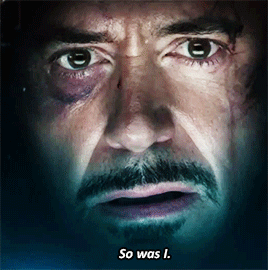
***
Honest characters are hard to find these days, as Hollywood churns out cookie-cutter adventure flick after cookie-cutter romance flick. One of the main reasons Marvel stands head and shoulders above just about every other franchise out there right now is that it set up difficult but compelling characters from day one—and stayed true to them every step of the way. This is nowhere truer than in Civil War.
While this isn’t my favorite of the Marvel movies, I do feel, in so many ways, it is the series’ crowning achievement. Even if the entire series made the unlikely move of careening downhill from this point forward, Civil War at least brought everything full circle in a brave and satisfying way.
Which, of course, brings us to the (temporary) end of our blog series as well. I hope you’ve enjoyed this analytical romp through one of my favorite film series as much as I have. I plan to make it an ongoing feature, so look for Part 14 in November when Doctor Strange releases. In the meantime…
Stayed Tuned: Next week, a special Wordplayer guest will give us another perspective on Ant-Man and why it demonstrates some excellent change arcs.
Previous Posts in This Series:
Iron Man: Grab Readers With a Multi-Faceted Characteristic Moment
The Incredible Hulk: How (Not) to Write Satisfying Action Scenes
Iron Man II: Use Minor Characters to Flesh Out Your Protagonist
Thor: How to Transform Your Story With a Moment of Truth
Captain America: The First Avenger: How to Write Subtext in Dialogue
The Avengers: 4 Places to Find Your Best Story Conflict
Iron Man III: Don’t Make This Mistake With Your Story Structure
Thor: The Dark World: How to Get the Most Out of Your Sequel Scenes
Captain America: The Winter Soldier: Is This the Single Best Way to Write Powerful Themes?
Guardians of the Galaxy: The #1 Key to Relatable Characters: Backstory
The Avengers: Age of Ultron: The Right Way and the Wrong Way to Foreshadow a Story
Ant-Man: How to Choose the Right Antagonist for Your Story
Wordplayers, tell me your opinion! Has it ever been hard for you to stay true to your characters? Why or why not? Tell me in the comments!
The post How to Be a Gutsy Writer: Stay True to Your Characters appeared first on Helping Writers Become Authors.
September 19, 2016
The Secret to Writing Dynamic Characters: It’s Always Their Fault
 It’s a morbid joke among writers: we are so mean to our characters. And we love it. It’s the stuff of good stories. It’s the stuff of epic conflict. And yet, all this very important imaginative cruelty can sometimes trip us up on our way to writing dynamic characters who can, in turn, deal with this epic conflict in an equally epic and meaningful way.
It’s a morbid joke among writers: we are so mean to our characters. And we love it. It’s the stuff of good stories. It’s the stuff of epic conflict. And yet, all this very important imaginative cruelty can sometimes trip us up on our way to writing dynamic characters who can, in turn, deal with this epic conflict in an equally epic and meaningful way.
A question I’m commonly asked in interviews is: Which of your characters would you like to be for a day?
Uhh, none of them?
Honestly, that’s kind of like asking the torture master to trade places with the condemned.
My characters may be awesome and do awesome things, but have you looked at the hell they have to go through to get there? Yeah, no thanks. They can have their heroism, and I’ll just stay right here in my comfy desk chair with my trusty cattle prod and keep right on poking.
Poor characters, right? Poor victimized, helpless little dupes. Right?
Wrong-o.
This is exactly the trap writers often fall into when trying to create dynamic conflict. They make their character a victim of his horrible circumstances—and, as a result, the character himself ends up lying there on the page: inert, pitiful, alternately whiny and long-suffering, and ultimately entirely incapable of driving his story’s conflict.
Yes, You Do Have to Be Mean to Your Characters
Now, before I proceed, let me just stop and stress something to the kind-hearted among us: yes, you really do have to mean to your characters.
Some writers revel in this (*raises hand*); others find their dislike of conflict in real life makes it difficult to create it on the page. Makes sense, after all. You create these people you love—people who are always extensions of yourself to some extent. Why would you want them to suffer?
Because you want to write an interesting story, that’s why.
Stories about what James Scott Bell calls “happy people in happy land” are numbingly boring. They aren’t stories, because nothing happens. There is no conflict because the characters aren’t encountering obstacles to their goals.
Those obstacles can be relatively slight inconveniences (red lights on the way to work), or they can be terrifying disasters (hurricanes, murders, imprisonments, betrayal, you name it). Both will move your story, and your choice of how cruel you will be to a character will always depend on the needs of the story.
But if you’re not pulling out the stops somewhere in your story, then you need to ask yourself if you’re really exploring your character’s potential. This doesn’t mean you have to introduce a serial killer into your cozy hamlet tale. But you do need to examine your character.
Find out what her weak spot is. What is she most afraid of? Usually this will tie back to the Ghost and Lie you’re using in her character arc. This is not just a general misfortune; this is something very specific to this character and her inner journey.
Are you exploiting that fear? Are you using it to bring your character to her knees?
If not, you’re almost certainly not being mean enough.
Hold That Thought: You Don’t Have to Be Mean to Your Characters
Now that we’ve established your characters most definitely need to suffer, let’s take a step back and look at this from a totally different angle.
You do not have to be mean to your characters.
In fact, it’s best if you stop thinking in terms of anyone in your story being mean to your character.
But… what about the evil bad guy who has the hero locked on the rack? He’s pretty mean.
True. But is it the evil bad guy’s fault your hero is on the rack?
Is your hero 100% innocent? Was he nabbed from the local village to be made a random example to the rebellious serfs? Is he a guiltless victim?
If the answers are yes, that undoubtedly makes him seem like a pretty good guy. But it also makes him a pretty boring and lifeless protagonist.
Here is the single most important thing to understand about your protagonist’s suffering: He must always be responsible.
What? You mean, he volunteered to be tortured?
Probably not. (However, do stop to think about how much more interesting that angle makes the above scene.) But he did do something that created the situation he’s in now.
Maybe he’s a serf himself—and he chose to rebel, even knowing what the punishment would be should he be caught.
Maybe he is innocent of the rebellion, but he chose to take blame in order to protect his guilty son.
Maybe he knew there was a rebellion underway in the southern villages, but he chose to travel through in a desperate hope of getting medicine for his dying wife.
Maybe he was just passing through, minding his own business, but when confronted with a random cruelty from the local lord’s guards, he chose to stand up for the poor peasant.
See what’s happening here? This is not a passive character. This is a character who is making choices.
Not only is he personally responsible for driving the plot, he’s also personally responsible for the consequences. His own choices—whether right or wrong—are what have put him in this fix. This raises infinitely more interesting thematic explorations than those you’d find if your hero were the entirely undeserved victim of someone else’s choices.
Catalytic, Not Catatonic: 5 Steps to Writing Dynamic Characters
Dynamism, by its very definition, is about forceful movement. In writing dynamic characters, you are writing characters who drive events. They are causes that create effects. In short, they are catalysts. What they are not is catatonic. They are not passive rag dolls, tossed around by random antagonistic forces.
The best news for you is that these catalytic characters are a blast to write. Consider five immediately applicable ways you can take your character from victim to overcomer.
1. Make Your Character Knock Down the First Domino
It’s true your antagonist controls the overall conflict (which is why it’s often best to begin your plotting by examining the antagonist’s goals, rather than the protagonist’s). This means your antagonist gets to make the first move on the chessboard. This does not mean, however, that the antagonist’s first move victimizes the protagonist.
Even if the antagonist’s move immediately affects the protagonist in an undesirable way, the protagonist must still actively make a choice that engages him in the rest of the plot. The antagonist may have knocked over the first overall domino. But the protagonist must knock over the first domino in his personal involvement in the conflict.
This usually happens at the Inciting Event, the turning point halfway through the First Act at the 12% mark. This is the Call to Adventure, where the protagonist first brushes the main conflict. Usually, he will start out by rejecting it in some way. He doesn’t want to engage with the conflict. Often, this very avoidance of his destiny puts him on the road to meeting it anyway. He makes a choice, for which he is responsible and which puts him on an inevitable collision course with the antagonist force.
For Example:
In Suzanne Collins’s The Hunger Games, Katniss Everdeen chooses to take her sister’s place in the Reaping. Consider how vastly more interesting a story we have thanks to her having to choose to take part in the Hunger Games—instead of being randomly reaped herself.
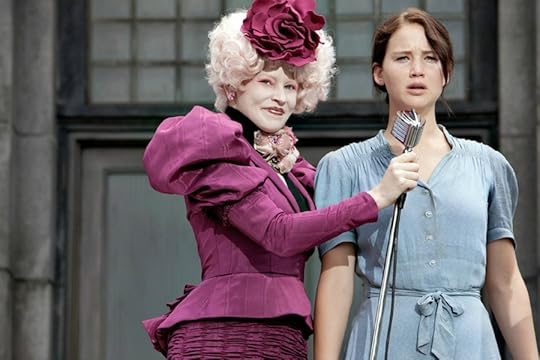
Katniss is a dynamic character, because she is not a passive victim of her circumstances. She actively chooses to take part in the Hunger Games, in order to prevent her younger sister Primrose from being “reaped.”
2. Knock Your Character Down, Then Make Him Choose Again
Although your character’s initial choice to engage with the conflict will ultimately be the cause for everything that follows, you can’t stop there. Many authors will set up their character’s involvement with the antagonistic force by hitting the character as hard as they can, knocking her to her knees—and then leaving her there. Scene after scene occurs in which the character is buffeted by trial after trial. And she just takes it.
The patience of Job is not what we’re looking for in a protagonist. When your character gets knocked down, she can’t just stay down. She must make an active choice.
Even if that choice ends with her getting knocked down again (and, frankly, I hope it does—especially in the first half of the book), she must continue to move proactively through the story, choice after choice after choice. Her choices are what cause the next round of getting knocked down—until eventually, she starts learning how to make better choices and stops getting beat up so often.
For Example:
In Diana Wynne Jones’s Howl’s Moving Castle, Sophie chooses (however reluctantly) to lie to the king about Howl, in an effort to get him excused from employment. The scene goes entirely sideways when she inadvertently shows her true beliefs about Howl’s goodness and capability. But the result of both her presence before the king and her inability to hide her growing love for Howl are both the result of her own choices.
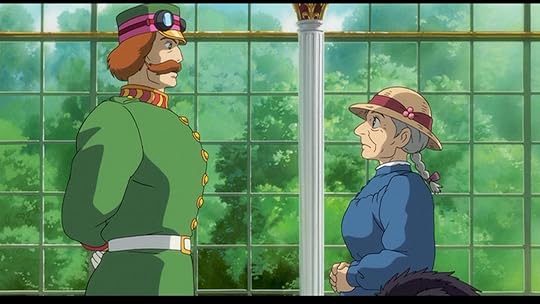
In Howl’s Moving Castle, Sophie reluctantly talks to the king on Howl’s behalf. However, despite her reluctance, she remains a dynamic character because her action is still entirely her own choice and the results are the consequences of her own actions.
3. Make Your Character Culpable
When your character gets himself stuck in a horrible situation despite having done only the right thing with the best of intentions, it can sometimes be hard to paint him as anything but a victim.
But what if he’s not so innocent after all? What if his own culpability for a downright wrong decision, either early in the book or somewhere in his past, means he actually deserves some of the horror he’s being hit with?
In their desire to make characters as likable and “good” as possible, authors often fail to explore this possibility. But nine times out of ten, dashing a little gray into your character’s choice will make both him and his conflict vastly more complex and interesting.
Consequences are the most interesting thing in fiction. The more deserved those consequences, the more interesting they become.
For Example:
Erstwhile assassin Jason Bourne is a tremendously likable character. He’s obviously a good man, just as he has obviously been the victim of tremendous desecration to his body, mind, and soul. In many ways, he is not truly responsible for the murders he was brainwashed into performing. And yet… he made the choice to “commit himself to the program.” Even though he can no longer fully remember it, he knowingly chose to allow himself to become a lethal tool in the hands of men with (at the best) dubious ethics and motives. At the end of the day, it’s all his fault. He knows it. We know it. And his suffering is all the more poignant for it.
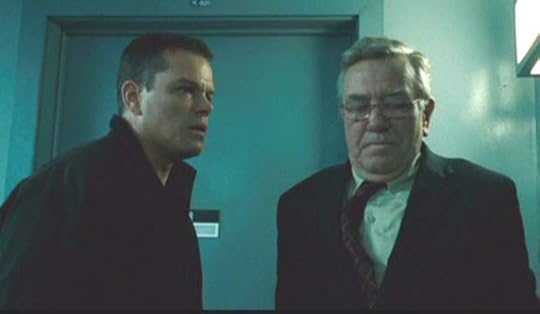
Even though Jason Bourne is undeniably a victim in some ways, he remains a powerful and dynamic character in large part because he is ultimately responsible for having chosen to be turned into an assassin.
4. Let Your Character Make Both Good and Bad Choices
As your story progresses and your character makes choice after choice that knocks over domino after domino in your story’s plot, you will want to vary the types of choices she makes.
Just because she’s the smart, brave, righteous good guy doesn’t mean she should always make the right choice. Mix things up. Let her make some righteous decisions. Let her make some morally problematic decisions. Let her make some smart decisions, but also let her make some poorly informed decisions. As Geoff Johns says,
The characters that have greys are the more interesting characters. The hero who sometimes crosses the line and the villain who sometimes doesn’t are just much more interesting.
You need a balance of both in order to keep readers believing in your character’s goodness and intelligence—while still allowing them to explore the fascinating ramifications of her fallibility.
For Example:
In Sergey and Marina Dyachenko’s fantasy fable The Scar, hubristic young nobleman Egert Soll makes bad decision after bad decision, starting with two ill-fated duels, one of which ends with his killing an innocent student and the other of which ends with his being scarred and cursed in recompense for his heedless cruelty to others.

In The Scar, protagonist Egert Soll brings a wretched fate down on his own head thanks to his own misguided choices and decisions.
5. Allow Your Character to Take Responsibility as Part of His Journey
Even though your character will be at least partially culpable for everything that happens to him, he won’t necessarily recognize this. In fact, he may very well rage against the heavens, declare himself a victim, and insist he doesn’t deserve anything that’s happening to him.
Although I would caution against laying on the self-pity too thick, you do want to let your character experience a progression of revelations, leading him to the ultimate choice of taking responsibility for his life in the Third Act.
Ultimately, all character arcs come down to this central Truth—we’re all responsible for our own lives—no matter what specific Lie your character is struggling with. As such, his ability to take responsibility for the consequences of his own actions needs to be an evolution.
For Example:
In Jane Austen’s Emma, Emma Woodhouse comes to the Third Act revelation that her actions have been selfish and misguided—and have very likely cost her the love of the noble Mr. Knightley. This revelation is the central revelation of both the plot and her character arc. In its aftermath, she chooses to take responsibility for her actions, both proactively and retroactively.
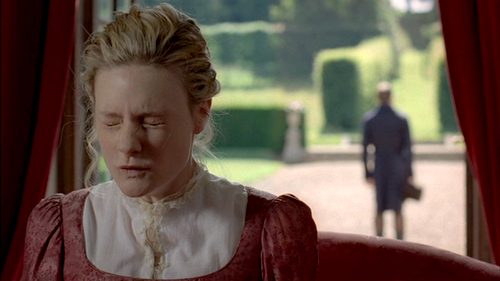
Jane Austen’s Emma Woodhouse only gradually comes to realize how her choices have affected others—and herself—over the course of the story and her own personal evolution.
Themes of responsibility and consequences are inherent in all stories. The more adamantly you claim them and force your character to face them, the stronger your story will become. Even better, you’ll learn how to begin writing dynamic characters who electrify readers.
Wordplayers, tell me your opinion! How have you gone about writing dynamic characters in your story? What choices do they make that reap important consequences? Tell me in the comments!
http://www.podtrac.com/pts/redirect.mp3/kmweiland.com/podcast/secret-to-dynamic-characters.mp3
Click the “Play” button to Listen to Audio Version (or subscribe to the Helping Writers Become Authors podcast in iTunes).
The post The Secret to Writing Dynamic Characters: It’s Always Their Fault appeared first on Helping Writers Become Authors.
September 16, 2016
How to Choose the Right Antagonist for Your Story
 Part 12 of The Do’s and Don’ts of Storytelling According to Marvel
Part 12 of The Do’s and Don’ts of Storytelling According to Marvel
What’s the secret of how to choose the right antagonist for your story? If you’re thinking it’s probably a little more complicated than simply making him a “bad” guy who’s out to get your protagonist, you’re definitely on the right track.
In fact, how to choose the right antagonist will influence everything about your story—from the coherency of its plot to the quality of its conflict to the focus of its theme.
In short, who will fill the role of your story’s antagonist is never a decision to be taken likely. Make the wrong decision and it could derail your story. Make the right decision, and it could be the key to making your entire book just click.
Today, let’s examine the qualifications of how to choose the right antagonist for your story.
Ant-Man: The Little-Big Addition to the Marvel Universe
Welcome to the twelfth installment in our serial exploration of the good and the bad in the Marvel movies. In light of that exploration, I find Peyton Reed’s Ant-Man a singularly interesting addition to the Marvel movies. For me, it’s a middle-of-the-road movie within the series, not so much because it’s a mediocre film as because my every reaction to it has an equal and opposite reaction to balance it.
It’s a unique film within the comic book genre: more heist than superhero.

And yet… it also packs very few surprises, hitting the beats of its various storylines (heist, redemption, protege vs. mentor, superhero origin) mechanically and without much irony or subtext.
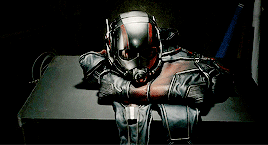
It’s big, bold new addition to the series, bringing in the first of an entirely new set of heroes—charmingly funny and earnest antihero Scott Lang.
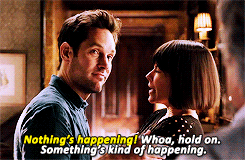
And yet, it somehow feels small in comparison to the previous heroic entries of Tony Stark, Thor, and Steve Rogers. Scott’s an add-on to the team, not a founding member—and it feels that way.

It throws in the unique twist of sidelining original Ant-Man Hank Pym as the mentor character, which gives audiences, in essence, two Ant-Mans for the price of one.
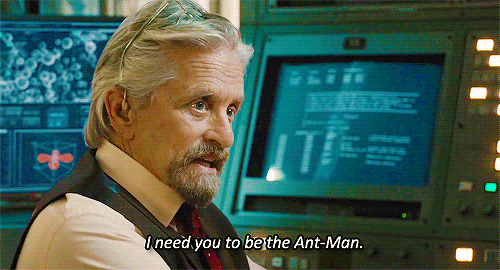
And yet, in doing so, it misaligns the conflict with its main antagonist, Darren Cross—Hank’s one-time protege and the rogue leader of his company.

And this is why Ant-Man offers a unique opportunity to study how to choose the right antagonist for your story. Objectively, Cross is the wrong antagonist for this story—and yet the story still makes it work.
Let’s take a look.
The 4 Qualifications of How to Choose the Right Antagonist
Want an antagonist who will help you take advantage of every aspect of your story? All you have to do is double-check him against the following four-part checklist.
1. The Antagonist Directly Opposes the Protagonist in the Plot
Let’s do a quick refresher on what an antagonist actually is. Boiled down to the lowest common denominator, an antagonist is nothing more or less than obstacle between your protagonist and his goal.
As such, the right antagonist will always be directly opposed to your protagonist. He won’t stand off to the side of the road, taunting the protagonist or throwing rocks at him. Nope, he’ll be the guy right smack in the middle of the road, pointing a gun straight at your protagonist’s head and telling him to stand down or it’s curtains.
If he’s not in the middle of the road, then he’s not the main antagonist (and/or whatever is at the end of that road is the wrong goal for your protagonist to be pursuing in the main conflict).
How to Choose the Right Antagonist to Oppose Your Protagonist
Ask yourself:
What is your protagonist’s main plot goal?
What is the Thing Your Character Wants?
What character (or thing) is best suited to get in his way?
How can this character (or thing) directly oppose your protagonist’s scene goals along the way?
What character (or thing) will your protagonist have to confront in the Climax?
Does Ant-Man‘s Antagonist Oppose Its Protagonist?
Ultimately, Cross is the wrong antagonist for Ant-Man simply because Scott Lang is the wrong protagonist. Granted, it’s kind of a chicken-and-egg problem. But the bottom line is that if Scott Lang is your protagonist, you must choose an antagonist directly opposed to his goals—and not Hank Pym’s.
In short, the choice of Cross as the main antagonist tells us this is really Hank Pym’s story, even though Scott is clearly set up as the protagonist.
Assuming, we want Scott as protagonist (which we obviously do), then a more appropriate antagonistic choice for him would be one that directly opposes his goal of staying clean, earning money, and regaining visitation rights with his daughter. Cross ends up opposing these goals, but only incidentally through Scott’s relationship with Hank.

2. The Antagonist Directly Opposes the Protagonist Thematically
The antagonist is a central cog in the wheel of your theme. Because he drives the external conflict—which is a visual metaphor for the protagonist’s inner conflict—he and the conflict he creates must be directly pertinent to the theme.
Now, granted, every character within your story should reflect upon some aspect of your theme in one way or another. But the main antagonist must be a direct commentary on your thematic premise. If he’s off chasing some other Lie or Truth—or even just a thematic blank—a crucial part of the thematic equation will be missing from your protagonist’s arc.
Alternatively, if the antagonist is not directly opposed to your protagonist in the conflict, then it doesn’t matter how thematically pertinent he is. His impact on the story simply won’t be as vital, because the protagonist’s personal discoveries won’t be directly connected to overcoming this external antagonist.
How to Choose the Right Antagonist to Thematically Oppose Your Protagonist
Ask yourself:
Does this character start out either
believing basically the same Lie as the protagonist?
believing a Truth contrary to the protagonist’s Lie?
Is this character painfully similar to the protagonist in some ways?
Is this character an example of either
someone the protagonist would desperately like to be?
someone the protagonist desperately wants to avoid being (or perhaps already is)?
Will this character be able to offer convincing thematic arguments with the potential to seduce the protagonist away from the story’s Truth—and, as a result, away from his story goal?
Does Ant-Man‘s Antagonist Thematically Oppose Its Protagonist?
There isn’t a ton of thematic depth in this movie, but what there is all revolves around parent/child relationships. Scott’s relationship with his loving, trusting daughter is one example. In this, he is following a similar path to Hank’s: except Scott succeeds in fulfilling his daughter’s trust, whereas Hank failed long ago with Hope after his wife’s death.
So far so good. Except… the antagonist Cross isn’t in a parental role. He’s in the child role, as resentful toward his former mentor Hank as is Hank’s daughter Hope. Cross certainly contributes to the theme, but his contributions relate more directly to Hank’s journey than to Scott’s. If Scott gets anything at all out of Cross’s insistence that Hank was a lousy father figure, it affects his own evolution only incidentally and subtextually.
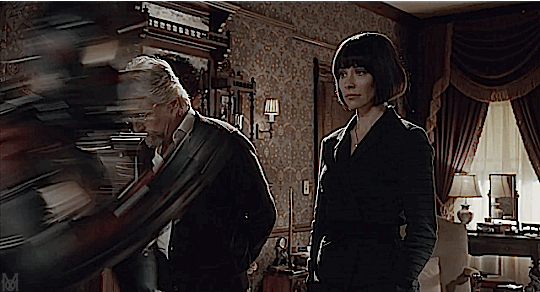
3. The Antagonist Is a Mirror for the Protagonist
As part and parcel of the antagonist’s thematic role, he needs to offer a jarring funhouse reflection of the protagonist. He is a representation of the protagonist’s dark side—of his Lie. Perhaps he is an omen of the protagonist’s future fate, or a consequence of the protagonist’s past choices, or a revelation of who the protagonist might have been in a different life.
The antagonist is almost always a “negative impact character,” one who influences the protagonist’s journey toward the light by forcing him to face the power of the Lie’s darkness. The more striking the similarities between these vastly different characters, the more opportunities you’ll have to explore and develop your theme.
How to Choose the Right Antagonist to Mirror Your Protagonist
Ask yourself:
What character best represents where the protagonist will end up if he takes the wrong path?
What character best represents where the protagonist wants to end up externally?
What character shares a similar backstory journey with your protagonist?
What character represents or shares similarities with your protagonist’s greatest failures to date?
Note that it’s not vital for your antagonist to represent the answer to all of these questions, but he should ideally be able to fulfill at least one of them.
Is Ant-Man‘s Antagonist a Mirror for Its Protagonist?
This is probably the one qualification Cross best fulfills for Scott, in that both are proteges of Hank Pym. Cross represents the dark potential of Scott’s relationship with Hank (and, also, much less directly, of the dark potential within Scott’s own relationship with his daughter if he fails her).
However, Cross is, by far, a better reflection of Hank than he is of Scott. Both are brilliant scientists. Both are ambitious and consumed with their discoveries. Both have invented shrinking suits, designed for warfare. Cross, in short, is Hank’s darkest self realized—made all the more poignant for Hank by the fact that he essentially created Cross.

4. The Antagonist Creates Obstacles for the Protagonist From the Start
In order to create and maintain a cohesive overarching narrative within your story, you must first have a cohesive and overarching conflict. That only happens when you have a main antagonist who is in position to oppose your protagonist’s main goals from page one (even if he doesn’t immediately reveal himself).
Even if your protagonist maintains a consistent plot goal throughout, if he is opposed by first one antagonist and then another, the consistency of both conflict and theme will suffer from the jerkiness.
It’s very possible both your protagonist and your antagonist will begin your story knowing nothing about each other. But they will still be obstructing each other, from the very beginning, in ways they won’t understand until a little later in the story. When the characters (and the readers) look back on your story, they should be able to see the main antagonist was in play from the very beginning, in one way or another.
How to Choose the Right Antagonist From the Start
Ask yourself:
What antagonist will be present in the Climax’s final confrontation?
How can this antagonist be the major opposing force against the protagonist at all of the major structural beats?
How can this antagonist be set up as an obstacle (or the inevitable potential for an obstacle) from the very first scene?
How will the protagonist “brush” against this antagonist’s power in the Inciting Event?
How will this antagonist drag your character into the main conflict at the First Plot Point?
Does Ant-Man‘s Antagonist Oppose Its Protagonist From the Start?
The short answer is: no. Protagonist Scott gets out of prison with the big story goal of reuniting with his daughter, for which he must earn money and stay out of trouble. His obstacles have everything to do with his criminal past and nothing whatsoever to do with Cross’s determination to create a functional Yellowjacket suit.
Scott’s conflict finally touches Cross’s when Hank recruits Scott to help him steal the Yellowjacket suit. But even then, Cross remains only a vague obstacle to Scott’s personal goals. Scott has no personal investment in opposing Cross—which robs their final showdown in his daughter’s bedroom of much of the personal power it might otherwise have wielded.
Once again, it is Hank who is directly opposed by Cross—on every possible level: professional, personal, practical, and thematic.

Why We Like Ant-Man Anyway
Did Ant-Man choose the wrong antagonist and/or protagonist? Without question.
Would it have been a better movie had it chosen an antagonist more suited to directly oppose Scott Lang? Definitely.
But, happily for us, it’s also an example of how, even when a story bombs on such an important element, it can still salvage itself through overall charm. This may not be a super-strong movie, but it’s still an utterly likable movie, driven by an utterly likable hero with an utterly relatable motive.
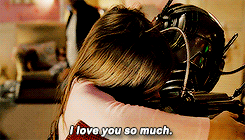
At the end of the day, those things are almost always more important than the finer points of antagonism and conflict. But just think how much more awesome your story can be if it gets all of that right, including finding the perfect antagonist for its specific conflict!
Stay Tuned: Next week, we’ll talk about why Captain America: Civil War‘s gutsiest move was portraying its characters with honesty.
Previous Posts in This Series:
Iron Man: Grab Readers With a Multi-Faceted Characteristic Moment
The Incredible Hulk: How (Not) to Write Satisfying Action Scenes
Iron Man II: Use Minor Characters to Flesh Out Your Protagonist
Thor: How to Transform Your Story With a Moment of Truth
Captain America: The First Avenger: How to Write Subtext in Dialogue
The Avengers: 4 Places to Find Your Best Story Conflict
Iron Man III: Don’t Make This Mistake With Your Story Structure
Thor: The Dark World: How to Get the Most Out of Your Sequel Scenes
Captain America: The Winter Soldier: Is This the Single Best Way to Write Powerful Themes?
Guardians of the Galaxy: The #1 Key to Relatable Characters: Backstory
The Avengers: Age of Ultron: The Right Way and the Wrong Way to Foreshadow a Story
Wordplayers, tell me your opinion! How did you decide to choose the right antagonist to directly oppose your protagonist throughout your story? Tell me in the comments!
The post How to Choose the Right Antagonist for Your Story appeared first on Helping Writers Become Authors.
September 12, 2016
The Only 5 Ingredients You Need for Story Subtext
 If there’s a magic ingredient in writing, it’s story subtext.
If there’s a magic ingredient in writing, it’s story subtext.
It’s actually not magic, of course, any more than any of the other demystified techniques of structure, theme, or character arc. But story subtext often seems like magic simply because, by its very nature, it is the execution of the unexplained.
Subtext is supposed to be invisible. It lives in the shadowy underworld beneath our words. It’s the hooded figure whisking around the dark corners of our stories, the mysterious clockmaker greasing gears behind the scenes, the phantom in our opera.
Just the very mention of subtext gives me delicious chills. A few years ago, I came to the revelation that all of my favorite stories had one very specific thing in common: subtext. All of them were stories that were about far more than what they appeared to be on the surface. They were all stories that invited me, as the reader or viewer, into the misty netherworld of the story to ask questions about characters and situations, to fill in blanks, to come to conclusions, and to broaden my experience of both the stories and my life.
Good story subtext allows readers to observe and learn without being taught. Subtext tells readers the author trusts them to understand the story and the characters without needing to have everything pointed out to them.
In short, story subtext = awesomesauce.
Why Story Subtext Is So Difficult to Master
So there I was—a total convert to the importance of story subtext. I even wrote a post about how you must put subtext into your stories. But then the inevitable queries starting coming in:
How do I create subtext in my story?
Uhhh. Good question. I could tell you what story subtext is, but because it is largely the science of what is not, it turned out to be incredibly difficult to quantify.
My exploration of how to avoid on-the-nose dialogue helped me get a mental foot in the door. But even in my own writing, I found myself stumbling through conscious attempts to create story subtext, while all those mysterious underworld manifestations snickered behind my back.
But, then, thanks to a comment from Wordplayer Joe Long (which I’ll share below), it suddenly all clicked for me and the story-subtext code was cracked.
The 5 Steps to Cracking Story Subtext’s Secret Code
Today, I’m going to show you how to create story subtext in everything you write using five simple but crucial principles.
1. Story Subtext Arises From the Space Between Two Known, Fixed Points
This is why story subtext is so often confusing. If it’s all about what’s not shown, then how can you possibly show it? How can readers ever see the subtext you want them to see if you’re not actually showing them anything? If you’re not filling in the important blanks, aren’t readers just as likely to read entirely the wrong subtext into your story? (Cue authorial panic.)
Good questions, all. And the answer is simply that subtext only works when it arises from the context.
If subtext is the shadow behind your story, then there must first be figures standing in the sun casting that shadow. Interesting blank spaces can only arise when there are existing shown elements of the story.
How You Can Do This in Your Story:
You start by explicitly telling/showing your readers certain things about your characters, plot, or story world. You tell them what they need to know (otherwise, you have no story). But you do not explain away the spaces in between.
Because readers will see the starting and ending points, they will understand the explicit shape of what you’re creating. But because you are resisting the urge to explain everything in between those points, you are allowing them to discover the implicit shape in between.
For Example:
Mike Newell’s video-game adaptation Prince of Persia: The Sands of Time is nothing more than a simple adventure story, but one of the reasons I enjoy it time after time after time (pun!) is because of the rich character subtext it offers.
The main character Dastan is a street orphan who was adopted as a child by the king. That’s fixed point #1.

Prince of Persia creates story subtext in its character relationships by showing us two fixed points of context, the first being Dastan’s salvation from the streets as a child by the king.
Then the story skips forward to an adult Dastan’s devoted but often strained relationship with his adopted brothers. That’s fixed point #2.
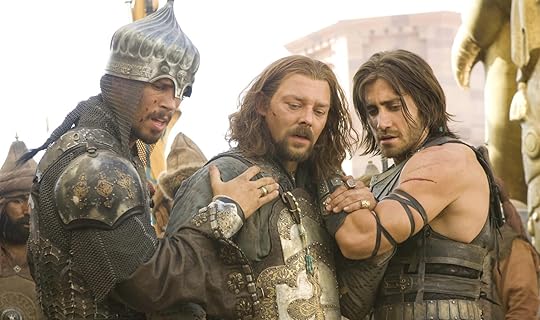
It then flashes forward to show us the understandably strained, but somehow still devoted relationship between Dastan and his adopted royal brothers.
But what happens in between? I am endlessly fascinated by the subtext of these relationships. We are never explicitly told how the brothers feel about each other and why. But we don’t need the story to condescend to tell us because we can extrapolate for ourselves thanks to the clearly fixed points of the context.
2. Story Subtext Must Explicitly Exist Beneath the Surface
Another reason authors often get hung up on understanding subtext is the necessary emphasis on the fact that subtext is what is not shown. This can often lead to the false assumption that the subtext is basically nonexistent. It’s a blank space.
But nothing could be farther from the truth.
Subtext is very explicit. It’s very real.
If you think of subtext as Ernest Hemingway’s “9/10ths of the iceberg under the water,” then you realize the invisible bulk of the iceberg absolutely exists. It must exist, in the author’s intentions and in the story’s allusions, if it is to carry any weight.
Otherwise, it is nothing but a blank. The story’s grounding in realism will become wobbly and unsatisfying, and readers will easily realize the author doesn’t actually have a clue what his story is really about or where his characters came from.
How You Can Do This in Your Story:
Since the whole idea of story subtext is that you’re not supposed to look at it in the direct light of day, writers often get the feeling they’re supposed to tiptoe around their own stories’ subtext, never looking at it.
This is exactly what you shouldn’t do.
It’s true you’re not going to give your readers a direct look at your subtext, but you absolutely must be thoroughly familiar with it. The subtext must exist—the iceberg must be under the water—if the story on top is going to have any chance of floating.
Create your story’s subtext deliberately. This requires an absolute understanding of your characters’ backstories, motivations, and goals, as well as a firm grip on the world around your characters.
For Example:
Guillermo del Toro’s Pacific Rim is one of my favorite movies, largely because its subtext is so rich. Like Prince of Persia, it’s a simple action flick on its surface. But it rises above the genre thanks to its storytellers’ rock-solid grasp of everything in their story world.
We sense this post-apocalyptic world, scourged by the alien kaiju monsters, is a rich, interesting, and very real place. We don’t learn everything there is to know about it (because all that stuff isn’t important to the plot). But we see enough fixed points within the context—the black market, the military tech, the cults, the Wall of Life—to understand there is a wealth of subtext under the surface.
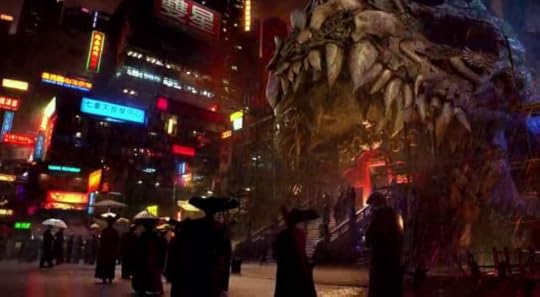
Pacific Rim creates a sense of depth and richness in its world by using story subtext to hint at complexity far beyond what is explicitly revealed in the plot.
Even for viewers who don’t visit these possibilities within their imaginations, the sense of a wider world makes the story seem that much bigger, more authentic, and more meaningful.
3. Story Subtext Must Remain Under the Surface
Once you’ve created context on the surface and subtext beneath the surface, that’s where they both must stay.
This can be a lot more difficult than it sounds. When you go to all the trouble of creating delicious backstory or worldbuilding, of course you want to share it! You love every little detail about your story, and you want to share every one of those details with your readers.
You also want to make sure readers get the subtext. Sometimes I find myself creating beautifully subtextual scenes—and then ending them with an explicit explanation, either because I want to make sure readers get it or even because I love what I’ve created so much I just want to jump and down and say, “See! See! Did you see how awesome that was?”
Naturally, I have to go back and delete my sometimes paranoid, sometimes exuberant excesses. I have to trust the subtext to carry itself—which it cannot do if I raise it above the surface into context.
The one exception to this is important story revelations. Often, you will keep certain aspects of your story (backstory secrets, antagonistic clues, etc.) under the surface for most of the story before revealing them in important scenes that advance the plot.
How You Can Do This in Your Story:
Resist the Urge to Explain. It’s as simple as that. Get into the habit of avoiding on-the-nose explanations in which you spell things out for readers.
This is especially true of dialogue. Although characters certainly will say things straight sometimes, make it a habit to force them into talking around subjects or coming at things sidelong or metaphorically. Whenever you find a character saying exactly what he means, stop and question whether you’re spoon-feeding readers information that would be more powerful if it remained under your story’s surface.
For Example:
Jason Bourne is possibly my all-time favorite character for the simple reason that he is never on-the-nose. He exists almost entirely within his own subtext. For most of the series, he is a mystery even to himself, thanks to his amnesia. We see definite fixed points within his personality and his past, but his near-silence forces/allows us to extrapolate his true motivations and feelings.
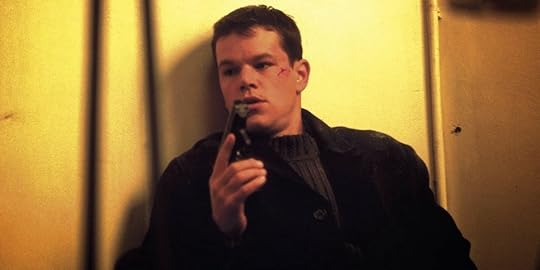
Jason Bourne carries almost all of the story subtext in his stories single-handedly thanks to the trust shown in viewers to extrapolate his past.
Were the character ever to sit down with a shrink and start explaining every detail about his experiences and emotions, the subtext would surface, and the depth and complexity of the character would be obliterated. It’s the great restraint shown in these stories that make them intellectually stimulating and emotionally moving.
4. Story Subtext Is Created by Dichotomy
The best and most interesting story subtext is always that which arises out of a seeming dichotomy. When the fixed points of your story’s context seem like they don’t quite align, that immediately sparks readers’ curiosity. What exists between these dichotomous fixed points that might explain the mystery?
You know you’ve discovered the potential for story subtext when something in your character’s behavior or the world around him makes you curious, makes you start asking questions.
Note, however, that subtext cannot arise from an explicit question. If you raise an explicit question in your story, readers will always expect an explicit answer. The moment anything becomes explicit, it ceases to be subtext.
Instead, these dichotomies must remain implicit questions. These arise when readers are led to believe the truth about a character or a situation is different from how it appears on the surface.
This was the revelation, given to me by Wordplayer Joe Long, that finally cracked the code of story subtext for me. He wrote in an email:
It’s always great when there can be a definite dichotomy between interior and exterior behavior. Truly that’s the heart of subtext.
Indeed, this is also the heart of character arc, which means the core of your character’s journey can be made all the more powerful through a judicious use of subtext.
How You Can Do This in Your Story:
Avoid presenting characters and situations for exactly what they are. This can be tricky for you, as the author, since you know exactly what’s going on. But resist the urge to share everything with readers right away. Allow the truth to be a story-long discovery for them.
This is especially valuable in character development. If your character is a good person deep down, great. But you don’t necessarily need to spell that out for readers right away. Show them something else. Show them the façade the character presents to the world, and only allow the subtext about his true nature to show through his actions.
For Example:
Supernatural‘s Dean Winchester is a fabulous character, largely because he’s deeply and endlessly conflicted—and because that conflict is allowed to remain largely subtextual. Viewers are shown conflicting truths about him: on the surface he is an irresponsible, obnoxious playboy, and yet, in a seeming paradox, he also cares deeply about others, even to the point of brutal self-sacrifice.
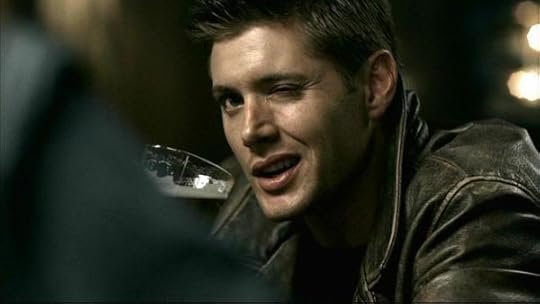
Supernatural‘s Dean Winchester is a deeply conflicted character who benefits from story subtext in allowing his cocky facade to hide his deep pain—and his better self.
The dichotomy raises questions. Why is this character this way? What is the internal conflict driving these contradictions? And which of these aspects of his nature is the true aspect?
5. Story Subtext Exists in the Silent Spaces
So far, I’ve been using movies as examples of story subtext. This is largely because the visual, exterior nature of film allows them to be far more subtextual than written narrative fiction.
Even though all these principles apply in written fiction, it’s important to realize you will usually need to spell out more in a book than in a movie. Things that can be implied in a film will leave readers confused if they aren’t explained or at least referenced in a book.
However, there is a simple trick for maintaining at least the illusion of subtext within a book. Cultivate your characters’ silence. Even when the story requires you to explain certain things to readers, resist the temptation to have your characters spell everything out to each other.
If you were to apply the same subtext-laden dialogue from a movie (in which viewers have no idea what the characters are thinking) in a book (in which at least the narrator’s thoughts are on display), you can still achieve almost the same effect of complexity and depth by simply cultivating the subtext of silence between the two characters.
How You Can Do This in Your Story:
Do not—repeat do not—allow your characters to tell each other exactly what they’re thinking. Whenever you find your characters spelling things out plainly, take a step back. Is this information absolutely crucial to the advancement of the plot or the readers’ understanding of what’s going on?
If not, axe it.
If so, take another look. Can you rephrase the explicitness of the dialogue to keep some of that iceberg under the water even while sharing the necessary information?
For Example:
Consider these two excellent examples of authorial restraint in not allowing characters to spell things out to one another.
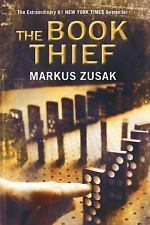 The first is from The Book Thief, Markus Zusak’s award-winning Young Adult saga of Nazi Germany. In it, the main character, Liesel thinks the explicit words she wishes to say to her doomed best friend Rudy. Readers understand exactly how she feels. But because she doesn’t say the words aloud to Rudy himself, they remain a powerful subtext between them.
The first is from The Book Thief, Markus Zusak’s award-winning Young Adult saga of Nazi Germany. In it, the main character, Liesel thinks the explicit words she wishes to say to her doomed best friend Rudy. Readers understand exactly how she feels. But because she doesn’t say the words aloud to Rudy himself, they remain a powerful subtext between them.
As promised, they walked far down the road toward Dachau. They stood in the trees. There were long shapes of light and shade. Pinecones were scattered like cookies.
Thank you, Rudy.
For everything. For helping me off the road, for stopping me…
She said none of it.
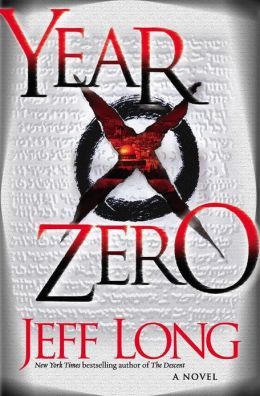 The second example is an even simpler one. In Jeff Long’s apocalyptic thriller Year Zero, readers were with protagonist Nathan Lee in a harrowing scene, where he futilely attempted to flag down an American aircraft carrier off the coast of Alaska. Readers fully understand this explicit context to the following conversation, even though this scene’s narrating character, Miranda, does not.
The second example is an even simpler one. In Jeff Long’s apocalyptic thriller Year Zero, readers were with protagonist Nathan Lee in a harrowing scene, where he futilely attempted to flag down an American aircraft carrier off the coast of Alaska. Readers fully understand this explicit context to the following conversation, even though this scene’s narrating character, Miranda, does not.
“She was a pilot in the Navy,” Miranda said. “On one of those ships that never came home.”
“What ships?”
“You must have heard about them. The mapping and search expeditions. They went out to take stock of the planet, but no one made it home. The satellites pick them up here and there. Ghost ships circling in the ocean. Like the Lost Dutchman.”
Nathan Lee fell silent. Miranda thought it must have to do with his own loss. He looked haunted.
Nathan Lee could have acknowledged his recognition of the ship with one simple line: “I saw it.” Instead, he falls silent, allowing the subtext of his pain to deepen—even though readers know exactly what he is thinking.
***
Story subtext may be magic, but it is also completely applicable. Once you master these five principles, you can step out of its shadows and wield it with purpose and power. The result will be stories of maturity, complexity, and profound depth.
Wordplayers, tell me your opinion! What is the story subtext in your work-in-progress? Tell me in the comments!
http://www.podtrac.com/pts/redirect.mp3/kmweiland.com/podcast/only-5-things-you-need-to-know-about-story-subtext.mp3
Click the “Play” button to Listen to Audio Version (or subscribe to the Helping Writers Become Authors podcast in iTunes).
The post The Only 5 Ingredients You Need for Story Subtext appeared first on Helping Writers Become Authors.
September 9, 2016
The Right Way and the Wrong Way to Foreshadow a Story
 Part 11 of The Do’s and Don’ts of Storytelling According to Marvel
Part 11 of The Do’s and Don’ts of Storytelling According to Marvel
Really, your job as an author can be summed up in one simple word: control. It is your responsibility to control readers’ experience of your story, to make them think and feel very specific things. One of the most important and powerful ways in which you do this is by understanding how to properly foreshadow a story.
Accurate foreshadowing, wielded with just the right amount of subtlety and clarity, creates a seamless and fulfilling experience for readers. It tells them what to expect, then rewards them for those expectations.
On the other hand, sloppy or forced foreshadowing will leave readers feeling either (best case scenario) confused or (duck and cover!) manipulated.
Unluckily, the balance between the two can be a very fine line to walk, and even storytellers as aware and excellent as Joss Whedon can miss the mark. Learn how to navigate the tricky technique of foreshadowing and control your readers’ experience of your story to everyone’s best advantage.
Why Avengers: The Age of Ultron Makes Me Very, Very Grouchy
Welcome to Part 11 in our ongoing look at the highs and lows of Marvel’s Cinematic Universe.
I’ve got to admit it upfront: Joss Whedon’s highly anticipated Avengers sequel Age of Ultron is easily my least favorite entry in the entire series. This isn’t so much because it’s the worst movie (Incredible Hulk wins that award, with Iron Man 3 grabbing silver), but rather because the techniques employed within it make me mad—as both a viewer and a writer.
Let’s preface this by saying I was incredibly psyched for Age of Ultron. Having just come off Captain America: The Winter Soldier, the best movie in the entire franchise, and following that with the startlingly good chaser of Guardians of the Galaxy, I was pumped with the possibilities for how Whedon would advance the collective storyline.
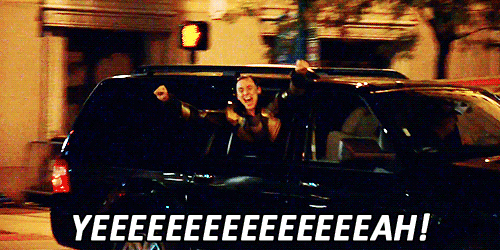
The fact that I was so excited inevitably contributed to how disappointed I ended up being, but the reasons for that disappointment are objectively solid causes, which all writers can learn from. Largely, I chalk up Ultron‘s problems not so much to poor storytelling (although that’s the result) as to Whedon and his crew admirably trying to outdo their work in the first Avengers. Nothing wrong with that. The problem enters because the ways in which they try to one-up themselves are not appropriately set up in either this movie itself or its predecessors.
In short, this is how not to foreshadow a story.
I’m sitting here trying to think of a few positive things I can say about the movie for the usual highlights reel that’s supposed to go in this section of the post. But, frankly, there is very little I really like about this movie. At best, it leaves me feeling meh. For example:
I was seriously bummed we didn’t get another “assemble” sequence in the First Act, since I was eager to see what the various characters had been up to in the aftermath of their own stories.
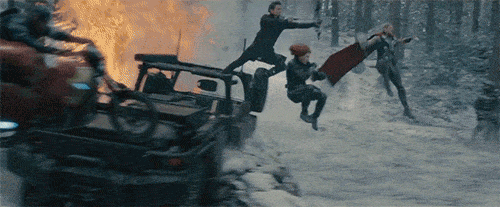
Whedon’s usually delightful and character-centric trademark humor felt forced and out of sync with the general tone and direction of the story, especially this gem:
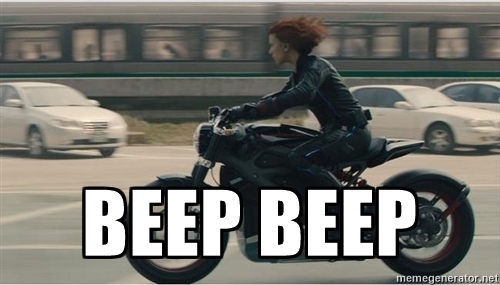
There’s too much going on. Way, way too much. Thor’s important vision subplot got seriously shortchanged as a result of introducing half a dozen new characters. (Contrast that to Civil War‘s near seamless integration of two brand-new major subplot characters, Black Panther and Spider-Man.)

The acting isn’t terrible by any means, but I did feel the cast (particularly the usually super-solid Chris Evans) struggled more in this film than any of the previous ones.
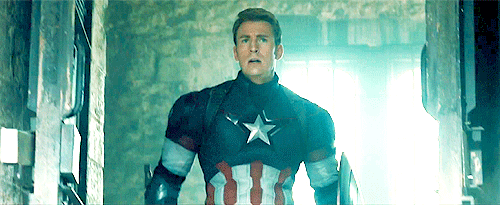
On the plus side:
The Scarlet Witch-induced dream sequences were awesome.
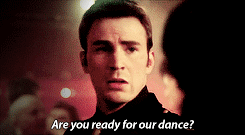
I loved the First Act party scene, the only time we really see the Avengers gelling together.

Oh, yes, and… this twitch. (More on that in a bit.)

I rewatched Ultron earlier this year, in preparation for this series, and while I wasn’t as emotionally involved this time around (and thus less irked by its problems), its issues are still glaring. Now that we’re post-Civil War, I’m happy to breathe a sigh of relief and say the series is still a force to be reckoned with, because Ultron could so easily have marked its descent into mediocrity or worse.
Let’s take a look at why.
The Wrong Way to Foreshadow a Story
Joss Whedon tried to do some very big things with Ultron. He tried to take the series in a new direction, do unexpected things, and subvert clichés. That’s all to the good.
So what’s the big problem?
The problem is that none of these things were set up in earlier films. Here’s a fundamental storytelling principle: Because he had no ability to control audience expectations in the setup for this movie, he ultimately had no control over their reactions to his plot developments.
In short, he didn’t give audiences what they expected. The result, however unintended, was that he did not play fair with audiences. If you do this in your story, the best you can hope for is that audiences will simply close your book feeling unfulfilled. The worst? They leave your story feeling betrayed.
If we examine Ultron as, shall we say, forensic storytellers—trying to piece together what went wrong—we can identify four specific aspects that will always benefit from a tightly considered control over foreshadowing.
How Not to Foreshadow Character Relationships
One of the most important aspects of character development in any story is found within a character’s relationships. It is in his interactions with other characters that his self is revealed to readers (and sometimes to himself as well). But relationships, as much if not more so than any other aspect of character development, must be created organically.
This means not just realistic pacing (no everlasting love at first sight please), but also an appropriate use of foreshadowing. The best relationships are those with history and weight, those the audience can follow along with, and to some degree, anticipate.
How Age of Ultron Failed to Foreshadow Character Relationships
Whedon threw audiences everywhere a curve ball when he set up a Black Widow/Incredible Hulk romance. Not only is this completely unprecedented in the comics (a small excuse, since, even had it been, the cinematic story can only be foreshadowed within itself), but the previous movies included faint but seemingly definite foreshadowing to the contrary.

Whedon’s own original Avengers movie set Natasha Romanov up with a powerful bond to fellow non-super Clint Barton, aka Hawkeye. She showed her emotions for the first (and arguably the most powerful) time in the entire series. Although there were no definite romantic sparks between them, fans everywhere expected a romance—which was subtly reinforced by actress Scarlett Johansson choosing to wear an arrow necklace in Winter Soldier, as a link back to Hawkeye’s archery skills.
Granted, Avengers also set up a sympathetic relationship between Natasha and Bruce Banner, but nothing that indicated the huge advances in their relationship by the time Ultron smacked us in the face with their unforeseen and largely unwanted new roles.
How You Can Properly Foreshadow Character Relationships
Well, let’s be honest: it all starts with you knowing who your characters end up with. This doesn’t mean you have to know right out of the gates, if you’re not an outliner.
But by the time you do figure it out, you must return to rewrite early scenes in order to properly control your readers’ expectations and desires for your characters. Give readers the wrong desires, ask them to support one romantic interest, only to throw him over in favor of another—and readers will not emotionally engage with the new relationship, even if it is otherwise the right choice within the story.
How Not to Foreshadow Character Backstories
Character backstories are in the back, right? Why would you have to foreshadow them?
What you need to foreshadow, of course, is the revelation of the backstory within the main story. Just because you’re withholding information about your characters’ pasts doesn’t mean readers won’t be forming assumptions about that past and your character.
If you fail to create the proper foreshadowing for the eventual revelation about the truth of your character, readers with either be jarred by the new information or possibly even reject it in favor of their own interpretation thus far.
How Age of Ultron Failed to Foreshadow Character Backstories
Take a look at Clint Barton. The new developments regarding his backstory in this movie create two massive disconnects with viewers.
One is simply that the backstory viewers were led (however subtly) to believe turns out to be utterly false.
The other is that, in its place, a new and entirely unforeshadowed backstory is introduced.
This development is, of course, the existence of Clint’s wife and two and a half kiddies—a revelation which is only slightly helped by the fact that none of the Avengers, save Natasha, knew of their existence either.

Now, don’t get me wrong: I actually really like the idea that one of the Avengers has a family. It brings an added dimension to the team as a whole and to Clint in particular. However, it works much better in retrospect than it did in real time. The onscreen revelation in Ultron is nothing short of jarring, even in light of the film’s desperate attempts to hint at it early on, via Clint’s jokes about not having a girlfriend.
How You Can Properly Foreshadow Character Backstories
Again, it starts by knowing your characters’ backstories. Largely, I feel this lack of knowledge was the biggest problem in the execution of Ultron. Had Whedon—and other directors—known about these developments during the production of earlier movies, everything could have been set up without a hiccup.
Consider the big reveals in your character’s past. Then examine the early chapters where that backstory is still largely a mystery. Have you sown hints to the truth? And just as importantly, have you avoided any clues that will contradict that truth by giving readers the wrong expectations about your character?
How Not to Foreshadow Plot Twists
Plot twists are all about the unexpected. Therefore, you’d think the last thing you’d want to do would be to foreshadow them.
There are, in fact, two important aspects of foreshadowing plot twists.
One is via misdirection, pointing readers at the wrong thing, so they won’t fixate on the right thing and see it coming a mile off.
The other is properly setting up reader expectations so, even if what they end up getting isn’t what they expected, it’s still what they want. This is the only way to create emotionally satisfying plot twists.
How Age of Ultron Failed to Foreshadow Plot Twists
I’m talking plot twists here, so you know it’s coming—SPOILER!
Ultimately, I could have forgiven the poor foreshadowing of Natasha’s new romance and Clint’s old family, but the final jerk on my chain was the “twist” of Quicksilver dying to save Hawkeye.

I’ve talked about this explicitly elsewhere, but suffice it that this entire scene was set up throughout the movie to manipulate the viewers’ expectations. Hawkeye was blatantly, even melodramatically, set up as death bait. The resultant twist didn’t feel like an escape from the noose (although I was glad to see the character survive), but rather a Ha! Gotcha!
The problem wasn’t a lack of foreshadowing, but rather an excessive and misleading use of misdirection. The result fulfills none of the goals of a good plot twist: it’s neither satisfying nor important to the development of either the characters or the plot.
How You Can Properly Foreshadow Your Plot Twists
First of all, repeat after me: Never include a plot twist just for the sake of the twist. A good plot twist must exist to serve the story, not just to fool readers.
Second, you must shape the story so the eventual ending is the only one readers will possibly find satisfying within the scope of the story. If they would have preferred the non-twist ending, then you have a problem.
Third, you must then create organic misdirection that keeps your readers’ attention away from the foreshadowing. When they look back, they should be able to see the foreshadowing and realize everything fit into place. Prior to that, however, you need to keep them distracted.
How Not to Foreshadow In-Jokes
Comparatively, this one is a tiny, tiny issue within Age of Ultron. It’s also one few authors will have cause to worry about in their stories. However, the more books you write, especially in a series, the greater your responsibility grows to maintain consistency, even in the little details, from book to book.
One of the delightful aspects of the Marvel movies is their consistent inclusion of little in-jokes from movie to movie. One of the most obvious is the Stan Lee cameo in each film. Another is the post-credits scene at the very end.

How Age of Ultron Failed to Foreshadow Its In-Jokes
To date, Age of Ultron is the only Marvel movie not to feature that post-credits scene. However small a disappointment that is, it’s still a disappointment.
Whedon chose not to do a post-credits scene because he felt he couldn’t top his shawarma scene at the end of the first Avengers. He wasn’t trying to jerk viewers’ chains or fool them into sitting through fifteen minutes of credits only to discover … nothing. He even tried to get word out in pre-release interviews that there would be no post-credits scene. But for viewers who didn’t get the word and who sat in that dark theater waiting for the expected in-joke, it did kinda end up feeling like the joke was on us.
How You Can Properly Foreshadow Your In-Jokes
Not all of you will have in-jokes or traditions within your stories. But if you can come up with them, they’re awesome. They’re a ridiculously great way to invest in readers and make them feel like they’re part of something special that only true fans really get.
But… the big caveat here is, of course, once you set up the pattern, you must maintain it. Readers who expect certain aspects of your story to appear from book to book will be disappointed when they fail to find them. The disappointment isn’t likely to be enough to alienate them, but why go there if you don’t have to?
The Right Way to Foreshadow a Story
Now that I’ve picked apart Ultron‘s foreshadowing, let’s talk about one example where it absolutely knocked its foreshadowing out of the park. Largely, this victory is the result of the fact that it created its own foreshadowing within itself, rather than messing with the foreshadowing and setup from previous movies in the series.
So please consider…
How to Foreshadow a Plot Twist
And again… SPOILER!
One of the very few moments in this story that totally worked for me on every level was the scene in which Vision lifts Thor’s hammer. It couldn’t have been more perfect. I literally gasped out loud.

Why did this work so well?
Easy (or at least the movie made it look easy). Think back to our three qualifications of a good plot twist from above. The scene with Vision and Mjolnir aces every single one.
1. The Plot Twist Must Move the Plot
Vision’s ability to lift Thor’s hammer proves his “worthiness,” which is absolutely critical to the story. Without this proof, the Avengers would have no reason to trust Vision, but instead would have been compelled to try to destroy him, just as they were trying to destroy Ultron.
2. The Plot Twist Is Satisfying
Without even realizing it, viewers were set up to expect someone to lift Thor’s hammer. The early scene at Tony’s victory party, in which each of the Avengers attempts to prove his worthiness by lifting the hammer is a brilliant setup.
On its surface, it seems to be nothing more than a funny scene showing the team kicked back and having fun before Ultron spoils everything. But what it is really doing is hammering home (hah!) the fact that only someone truly worthy can lift the hammer. It’s the ultimate personal test, one none of the Avengers (with arguable exception of Cap) can pass.
When Vision then raises the hammer without warning (not even to claim it for himself, but to return it to Thor), the significance is instantly and utterly clear to viewers.
3. The Plot Twist Is Protected by Misdirection
The early hammer-lifting contest is such a funny and organic scene in its own right, viewers don’t even realize they’re watching foreshadowing.
Foreshadowing sometimes can’t help being blatant, but the best foreshadowing will always flow so well with the characters and the plot that it isn’t clear until hindsight that it was priming readers. Instead, readers are eased into a state of preparation for coming events without even knowing it.
That’s power. That’s control. That’s foreshadowing.
Stay Tuned: Next week, we’ll talk about why Ant-Man chose the wrong antagonist… or did it?
Previous Posts in This Series:
Iron Man: Grab Readers With a Multi-Faceted Characteristic Moment
The Incredible Hulk: How (Not) to Write Satisfying Action Scenes
Iron Man II: Use Minor Characters to Flesh Out Your Protagonist
Thor: How to Transform Your Story With a Moment of Truth
Captain America: The First Avenger: How to Write Subtext in Dialogue
The Avengers: 4 Places to Find Your Best Story Conflict
Iron Man III: Don’t Make This Mistake With Your Story Structure
Thor: The Dark World: How to Get the Most Out of Your Sequel Scenes
Captain America: The Winter Soldier: Is This the Single Best Way to Write Powerful Themes?
Guardians of the Galaxy: The #1 Key to Relatable Characters: Backstory
Wordplayers, tell me your opinion! What events will you need to foreshadow a story in your work-in-progress? Tell me in the comments!
The post The Right Way and the Wrong Way to Foreshadow a Story appeared first on Helping Writers Become Authors.
September 8, 2016
Sign for the 3 Missing Pieces of Stunning Story Structure Webinar
The 3 Missing Pieces of Stunning Story Structure webinar is now available for sign up! This 90-minute presentation, hosted by Writer’s Digest, will be live online on September 15th, at 1 PM EDT (although, once you sign up, you can listen or re-listen anytime you want for up to a year). I’ll be talking story structure, answering live questions, and critiquing participants’ story structures. It’s gonna be fun!
See you there!
About the 3 Missing Pieces of Stunning Story Structure Webinar
If you’ve read all the books on story structure and concluded there has to be more to it than just three acts and a couple of plot points, then you’re absolutely right! It’s time to notch up your writing education from “basic” to “black belt.”
Learn how to use a strong three-act structure to build a story with the greatest possible impact on readers-and then how to take that knowledge to the next level. By the time you’ve finished, you’ll know more about story structure than the vast majority of aspiring authors will ever know.
During this live webinar, you will discover the three “missing” pieces of advanced story structure.
What You’ll Learn
Why the Inciting Event isn’t what you’ve always thought it is
What your Key Event is and how to stop putting it in the wrong scene
How identify your Pinch Points-and why they can make the middle of your book easier to write
How to create the perfect Moment of Truth to move your protagonist from reaction to action
How to ace your story’s Climactic Moment every single time
Who Should Attend?
Writers wanting to take their understanding story structure to the next level
Writers who have difficulties with any one part of the novel: beginning, middle, or end
Writers who want to learn the best way to unleash their personal vision for their stories
Writers who want to identify and correct common structural weaknesses
How Does the Critique Work?
All registrants are invited to submit a one-page synopsis, outlining your story’s structural arc. All submitted synopses are guaranteed a written critique by yours truly. Instructions on how to submit your work are sent after you officially register.
The post Sign for the 3 Missing Pieces of Stunning Story Structure Webinar appeared first on Helping Writers Become Authors.
September 5, 2016
Most Common Writing Mistakes, Pt. 53: No Contractions in Dialogue
 What’s the worst writing mistake an author can make? It’s a broad one: doing something you think makes you look sophisticated and clever, when really… it doesn’t. A common manifestation of this is a conscientious avoidance of contractions in dialogue and narrative.
What’s the worst writing mistake an author can make? It’s a broad one: doing something you think makes you look sophisticated and clever, when really… it doesn’t. A common manifestation of this is a conscientious avoidance of contractions in dialogue and narrative.
I’ll admit I fell prey to this as a young writer (who not so coincidentally read a lot of Austen and Dickens). Contractions were informal, hence they must be unprofessional. And I was far too smart to be anything less than polished in my first novel.
The result, however, was more along the lines of what blog reader Jim Prall mentioned in a recent comment:
“I just finished [an] audiobook…. All the dialogue was rendered with no use of contractions at all. It really stood out and seemed quite jarring, perhaps especially when read aloud. Real people naturally speak in contractions all day long. Dialogue composed without them seemed really stiff and artificial—almost as if English were not the speakers’ first language.”
Today, let’s examine why contractions in dialogue should absolutely find a place within your writing—along with a few exceptions, in which it is actually best to avoid them.
How to Avoid Contractions in Dialogue and Sound Like Pompous Buffoon
Contractions, of course, are shortened words or phrases, usually created by combining two words and noting the juncture (and usually some deleted letters) with an apostrophe.
For example:
Can’t for cannot
Won’t for will not
She’ll for she will
He’d for he would or he had
They’re all slang—glorious slang!—and because almost everyone commonly uses contractions in almost all forms of communication, writers can hardly avoid contractions in dialogue without also sacrificing realism. What’s arguably even worse is that, because about the only times we do naturally avoid contractions is in super-formal usage, contraction-less writing inevitably comes across as forced, prim, even supercilious.
Take a look:
Billy galloped in from the cornfield, kicking the old mule forward. “The bandits is coming, Ma! They are coming for sure this time!”
Josephine looked up from the washtub and shaded her eyes. “Well, it is about time, is it not? We cannot keep hiding all this gold forever and a day.”
“But that is not all.” Billy dragged the old mule to a dusty stop. He gulped for air. “Pa is with them. White horse, white hat. I am sure it is him, Ma, I am just sure.”
Her heart stopped. “Good Lord. That cannot be. It just… that marshal said he died for sure.” He could not have lied… could he?
Do these folks sound like dirt-poor Old West farmers with dubious backgrounds? For that matter, do they sound like anybody you’ve ever heard of outside of Victorian British society (more on that in a sec)? Was the reading easy? Was it fun?
Or did it sound pompous and stilted?
How to Use Contractions in Dialogue to Rock Your Dialogue and Narrative Voice
Even aside from the fact that their prevalence necessitates their use in any sort of realistic dialogue or narrative voice, contractions are a tremendous tool for writers. A clever use and choice of contractions in dialogue will allow you to flavor your characters’ voices in unique and specific ways. Consider two lines from my historical superhero work-in-progress Wayfarer, set in early 19th-century England:
Example #1: “It is such a beautiful day, is it not? I love these genial September days in the country.”
Example #2: “Want my advice? Don’t be taking lodgings here. Post yourself straight from London. This ain’t no place for the innocent, if you know what I mean.”
Bet you can tell straight off which is the daughter of an earl and which is the street waif.
Now, take another look at our original example, but with a few choice contractions sprinkled into the dialogue:
Billy galloped in from the cornfield, kicking the old mule forward. “The bandits is coming, Ma! They’re coming for sure this time!”
Josephine looked up from the washtub and shaded her eyes. “Well, it’s about time, ain’t it? We can’t keep hiding all this gold forever and a day.”
“But that ain’t all.” Billy dragged the old mule to a dusty stop. He gulped for air. “Pa’s with ’em. White horse, white hat. I’m sure it’s him, Ma, I’m just sure.”
Her heart stopped. “Good Lord. That can’t be. It just… that marshal said he died for sure.” He couldn’t have lied… could he?
They sound like totally different people, don’t they?
But What About Contractions in Narrative?
Every now and then, I’ll run into a writer who received a critique (usually from a fellow unpublished author), in which they were advised to use contractions, but only in dialogue. Is that accurate?
Yes and no. Ultimately, it depends upon how formal you want your narrative to be. But if you’re writing deep within your character’s head—in first-person or deep third—then the narrative voice you’re creating will follow the same basic principles as dialogue. The first and foremost of those principles is: Make it sound alive!
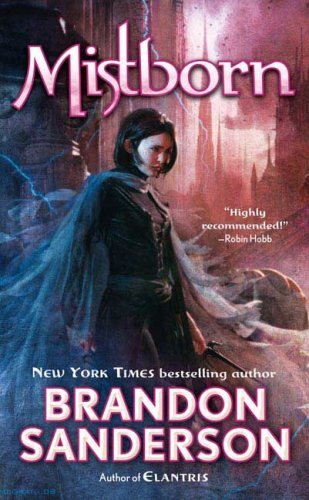 Here’s a third-person example from Brandon Sanderson’s Mistborn:
Here’s a third-person example from Brandon Sanderson’s Mistborn:
It wasn’t a hard rain, but it seemed to clear the mist slightly. Vin shivered, pulling up her hood, crouching beside Kelsier on a rooftop. He didn’t pay the weather much heed, so neither did she. A little dampness wouldn’t hurt—in fact, it would probably help, as the rainfall would cover the sounds of their approach.
 And a first-person example from John Green’s The Fault in Our Stars:
And a first-person example from John Green’s The Fault in Our Stars:
That is probably true even if you live to be ninety—although I’m jealous of the people who get to find out for sure. Then again, I’d already lived twice as long as Van Houten’s daughter. What he wouldn’t have given to have a kid die at sixteen.
In short, please, use contractions.
4 Exceptions: When You Shouldn’t Use Contractions in Dialogue
With all that said, there absolutely are instances in which foregoing contractions in dialogue is a good choice. Here are four:
1. When Writing Historical Dialogue
One of the reasons we still instinctively feel contractions are less than sophisticated is because, for centuries, they were. Particularly prior to the 20th century, contractions were used only by the lower classes. (Hence, my earl’s daughter in the previous excerpt and her hoity “is it not?”.)
This does not mean you can never use contractions in historical dialogue, but it does mean you must be aware of the conventions of the times and which characters would and would not be using contractions in their everyday speech.
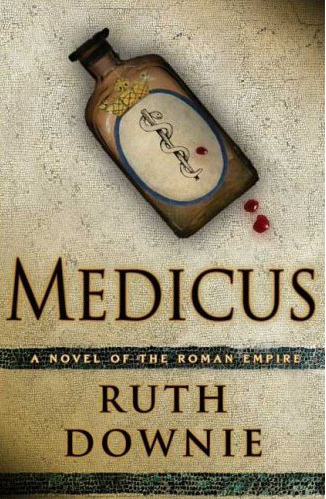 Again, however, another exception: when writing very ancient historical fiction, you can often get away with putting surprisingly modern words in your characters’ mouths, since you’re not going to be able to accurately replicate their true forms of speech with any intelligibility to today’s readers. Ruth Downie’s Medicus, set during the Roman Empire, is a good example:
Again, however, another exception: when writing very ancient historical fiction, you can often get away with putting surprisingly modern words in your characters’ mouths, since you’re not going to be able to accurately replicate their true forms of speech with any intelligibility to today’s readers. Ruth Downie’s Medicus, set during the Roman Empire, is a good example:
“Merula isn’t going to hurt you, Tilla. She’s no fool. She wouldn’t dare touch someone else’s slave.”
2. When It Suits the Character’s Personality
Contractions are a valuable tool in conveying dialect and informality (such as Billy and his mom or my Cockney street waif from the above examples), but it works in reverse too. When you’re purposefully writing a character who is elegant, educated, pompous, or reserved, foregoing at least some of his possible contractions may be a good choice.
3. When the Character Is Not a Native Speaker
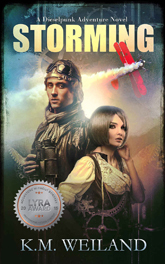 As Jim Prull noted in the comment I shared at the top of the article, a lack of contractions in dialogue often makes characters (or the author) sound like a non-native speaker. When this is the intended effect, it can be used to great advantage. I chose this trick for the mysterious woman who falls out of the sky in my aviation-adventure novel Storming:
As Jim Prull noted in the comment I shared at the top of the article, a lack of contractions in dialogue often makes characters (or the author) sound like a non-native speaker. When this is the intended effect, it can be used to great advantage. I chose this trick for the mysterious woman who falls out of the sky in my aviation-adventure novel Storming:
“To Groundsworld I am falling. Now I am having to go home before time is too late. Please. But you cannot be talking of this to any persons on ground.”
4. When the Situation Is Formal
When you’re in a situation where you want to make a good impression, appear professional, or cover your nerves, you’re more likely to speak precisely and avoid contractions. Same goes for your characters. When one of them is nervous or giving a speech (or both), you might want to consider stiffening his language choices just a bit.
In your quest to bring your characters and stories to life, you need to access every possible tool. Contractions in dialogue are a comparatively small trick, but they can also be a powerful one when used with knowledgeable intent. I can’t sum it up better than Jim Prull did in his comment:
So whatever you feel you must do in your own voice as narrator, please don’t artificially distort your characters’ dialogue to satisfy some imagined requirement for “proper” grammar.
Wordplayers, tell me your opinion! How do you feel about contractions in dialogue and narrative? Tell me in the comments!
http://www.podtrac.com/pts/redirect.mp3/kmweiland.com/podcast/mistakes-53.mp3
Click the “Play” button to Listen to Audio Version (or subscribe to the Helping Writers Become Authors podcast in iTunes).
The post Most Common Writing Mistakes, Pt. 53: No Contractions in Dialogue appeared first on Helping Writers Become Authors.
September 2, 2016
The #1 Key to Relatable Characters: Backstory
 Part 10 of The Do’s and Don’ts of Storytelling According to Marvel
Part 10 of The Do’s and Don’ts of Storytelling According to Marvel
Ever stop to think about why you enjoy backstory?
I receive lots of questions from writers about backstory, most of it along the lines of: I love my backstory soooo much. How can I cram as much as possible of it into the main story?
I hear you. Because I love my backstory too. There’s one simple reason why we all love it so much.
Backstory is the key to discovering our characters.
Backstory is Ernest Hemingway’s 9/10ths of the iceberg under the water. It’s the delicious subtext. It’s what gives depth and breadth to a character—even (and here’s the magic part) when the backstory itself is barely touched upon in the main story.
Whenever I write a character who just isn’t working out for me, the problem is inevitably that I don’t have a grasp on his backstory. If you don’t know where a character came from, then you don’t yet really know who that character is.
That’s why writers love backstory. Turns out, that’s why readers love it too.
How a Romp Like Guardians of the Galaxy Effortlessly Created Relatable Characters
This brings us to Part 10 of our ongoing exploration of why so many of us are loving the Marvel Cinematic Universe. Guardians of the Galaxy officially kicked off the series’ Cosmic storyline with a rompy space opera that, at first glance, seemed doomed to fail. I remember seeing the original concept art for the movie way back and thinking:
A raccoon.
A. Raccoon.
A Rac.Coon.
Seriously .
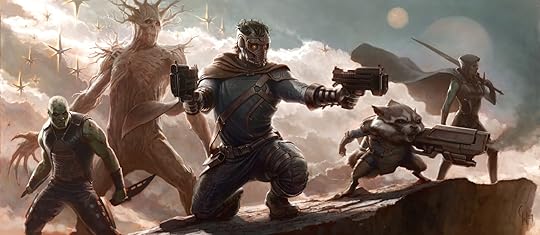
I wasn’t the only one. Based on a littler known Marvel storyline, starring what was then a largely non-A-list cast, and being deliberately funky in about every way known to late-summer movies, it seemed like Marvel was really stretching on this one.
At this point, retrospect tells us Marvel’s dark horse turned out to be massive winner for almost all of those same reasons, and more:
It’s a good old-fashioned space opera, in the best tradition.

It balances spot-on satire of the heroic genre, without actually sacrificing that genre.
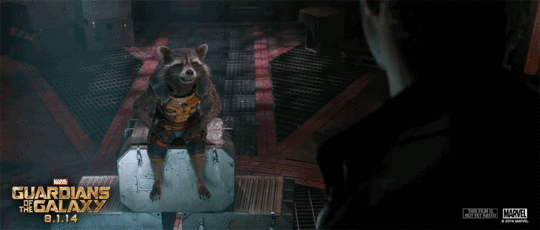
The upbeat and highly nostalgic ’80s soundtrack could practically have carried the film in its own right.

It finally and fully tied much-foreshadowed über-villain Thanos into the storyline.
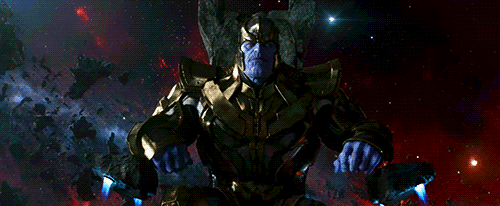
It pulled off a near facsimile of The Avengers‘ seemingly effortless trick of harnessing a crazily diverse and yet utterly charming cast of five (count ’em five) main characters.

If you think that’s easy, think again. For most of us, presenting one charming main character is hard enough.
How did Guardians manage this impressive trick?
Easy! It brought all its main characters to life, in a minimum of time, by grounding each and every one of them and their motivations in a pertinent backstory.
What’s the Ghost in Your Character’s Backstory?
It’s not enough to just give your character a history. The fact that she worked as a checkout clerk at Safeway when she was in high school is not going to secure your readers’ undying love and loyalty.
Nope, what your character needs is a Ghost. This is the wound in his backstory. It’s something that haunts him. (Because ghosts haunt people, get it?) It’s something so big and painful that it shaped him into the person he is today.
Consider the Guardians’ Ghosts:
Peter Quill / Starlord
As the protagonist, Quill’s backstory is given the most screen time. In a lengthy early segment, he is a young boy, waiting at the hospital for his mother to die of cancer. Something this traumatic is usually more than enough to create a powerful Ghost. But that’s just the the start for poor Peter. As he runs out of the hospital after his mother dies, he’s kidnapped by aliens—never to return to Earth (so far).

Gamora
The adopted daughter of Thanos starts out as a seeming antagonist, a woman entirely with it—especially in comparison to Quill’s often-clueless bravado. But when she betrays Thanos and joins forces with Quill, her actions make absolute sense in light of the Ghost in her past: Thanos killed her family before “adopting” her and turning her into his private assassin.

Rocket Raccoon
Did I express disgruntlement about the presence of a talking raccoon in a Marvel movie? Obviously, that was before I met the wise-cracking, emotionally twisted, touchy little furball. Once you get over the fact that he is indeed a talking raccoon, he becomes arguably the most compelling and interesting character in the story. Part of that is his delightfully smart mouth and part of it is his strange bond with the gentle Groot. But no small part of it is his backstory Ghost: as a lab experiment, ruthlessly tortured into his unique sentient existence (“Ain’t no thing like me ‘cept me”).
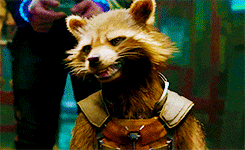
Drax the Destroyer
The literal-minded alien collosus Drax is arguably the least developed of the main characters. But he works for two primary reasons. 1) He’s funny in unexpected ways (“Nothing goes over my head!”). 2) He has a serious Ghost motivating all his actions in the movie: his wife and children were massacred.
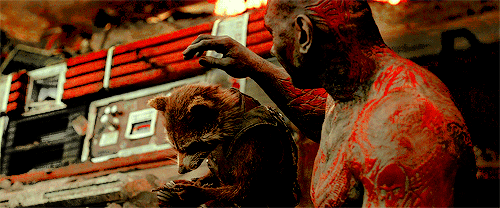
Groot
Groot is special. Groot does not have a motive, a Ghost, or a backstory—as far as we know. But something obviously happened to him to make him the way he is.
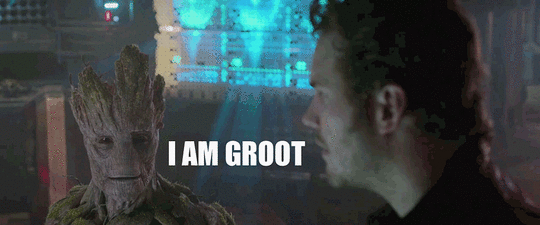
3 Ways a Backstory Ghost Brings Your Characters to Life
A well-chosen Ghost brings several important dimensions to any character:
1. Motivation
Characters never act in vacuum. There must always be a reason why they choose to pursue their story goals and use the methods they do. The Ghost is always the most important cause in your character’s backstory; as such, the main story, in many ways (and sometimes in its entirety) is the effect of the Ghost.
How Guardians Gets This Right:
As you can see from the above list, almost all the main characters are directly motivated in their story goals by their backstory Ghosts. Gamora and Drax are out to subvert Thanos because of his past treatment of them. Quill and Rocket are both compensating for their past pain in pursuing mercenary gains at first, and then realizing the family dynamic they’re creating amongst themselves is what they really need in order to be complete.
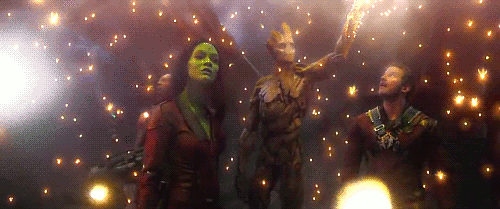
How You Can Use Your Character’s Ghost to Create Motivation:
First ask yourself: What does your character want in this story? What is his main goal?
Now ask yourself: Why does he want it? Sometimes the Ghost will be the direct answer (as it is for Drax). Other times, the Ghost will be the source of a deeper personal inadequacy, fueling the Lie the Character Believes, which, in turn, prompts him to pursue the story goal in an attempt to salve this personal wound (as Quill does).
2. Mystery and Subtext
This is possibly my favorite aspect of the backstory Ghost. When you dream up a vast and interesting backstory for your character, you have the opportunity to create both a mystery that piques readers’ curiosity and a sense of subtext and meaning underlying even your character’s simplest actions.
How Guardians Gets This Right:
Quill’s backstory is largely spelled out right from the start. But there are gaps: Who is his “angelic” father? And even without the gaps, his Earth childhood and his musical bond with his mother grounds his character throughout the story, provides context for his actions (saving Gamora), and foreshadows his climactic decisions (dance off!).
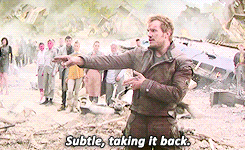
The other characters’ backstories remain more subtextual, allowing readers to understand enough about their motivations, while still leaving plenty up to readers’ imaginations and curiosity.
How You Can Use Your Character’s Ghost to Create Mystery and Subtext
When I get questions like the one in the first paragraph, in which writers want to know how they can cram as much of their backstory as possible into the main story, my chief bit of advice is always: wait.
As much as you want to share all this good stuff, you will almost always create a more powerful backstory by not sharing all of it upfront.
Tell readers only what they need to know when they need to know it, but sow clues and hints along the way. Make your readers crazy to know the truth about your character’s past and they’ll keep reading for that reason alone.
3. Empathy and Understanding
When you share the things your character has suffered, you immediately give readers an opportunity to relate to this characters’ pain via their own pain. As Rocket says, “We all got dead people.”
This also gives you a vast opportunity to get readers to understand your character, his motivation, and his reasons for choosing to act in sometimes less than admirable ways. A dark backstory Ghost won’t excuse a character’s bad behavior, but it will help readers hold off on judging him too harshly.
How Guardians Gets This Right:
With the arguable exception of Groot, every single character in this story is either an outright scumbag or has made at least a few questionable choices. The trailer shows them in a mugshot lineup at a maximum security prison, while a guard rattles off their many crimes. This is not the Good Citizen Brigade, and few of us would trust these people to sit at the breakfast table with our children.
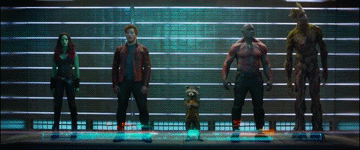
And yet… we still love them. We don’t judge them for their past (and sometimes current) sins. We accept them largely because their backstory Ghosts have allowed us to understand why they are the way they are and why they have chosen to act as they do. For the very small amount of time the movie spends on backstory, this is a huge reward to be reaped in return.
How You Can Use Your Character’s Ghost to Evoke Empathy and Understanding:
Think I’m going to tell you to come up with the most pathetic sob story you can think of? Nope. In fact, pouring on the melodrama can have exactly the opposite effect.
The key to creating a backstory Ghost that will resonate with readers and invest them in your characters is simple:
Make sure the ghost directly relates to:
a) the main plot
b) the character’s goal
c) the character’s motivation
d) all of the above.
For example, Gamora’s ghost would have been far less effective had she become an orphan simply because her parents happened to die of E. coli. But because her Ghost is the direct cause of her having acted as an assassin for Thanos all those years, we forgive her unforgivable actions without a second thought.
Backstory is indeed one of the most vastly powerful tools in an author’s array. But don’t wield it like a random shotgun. Focus on the Ghost and the ways in which it can directly power and enhance your main story—and you’ll end up with a backstory your readers will love as much as you do.
Stay Tuned: Next week, we’ll talk about why The Avengers: Age of Ultron‘s plot twists were disrespectful to its viewers.
Previous Posts in This Series:
Iron Man: Grab Readers With a Multi-Faceted Characteristic Moment
The Incredible Hulk: How (Not) to Write Satisfying Action Scenes
Iron Man II: Use Minor Characters to Flesh Out Your Protagonist
Thor: How to Transform Your Story With a Moment of Truth
Captain America: The First Avenger: How to Write Subtext in Dialogue
The Avengers: 4 Places to Find Your Best Story Conflict
Iron Man III: Don’t Make This Mistake With Your Story Structure
Thor: The Dark World: How to Get the Most Out of Your Sequel Scenes
Captain America: The Winter Soldier: Is This the Single Best Way to Write Powerful Themes?
Wordplayers, tell me your opinion! What’s the Ghost in your character’s backstory? Tell me in the comments!
The post The #1 Key to Relatable Characters: Backstory appeared first on Helping Writers Become Authors.





